for s u s ta i n a b i l i t y






firms big and small are greening and leading









firms big and small are greening and leading


34 Centers for Sustainability
B y C a r o l yn Ta n g
They ’ re not just for tree -huggers anymore
38 Become a High-Performance Company
B y D er r i c k Li l l y
It takes more than creating value to lead with the best you have to sustain it for the long haul
42 Trade Wars
B y Sh er yl N a n c e - N a sh
There’s friction between the United States and China, but most aren’t calling it a ‘ war ’ at least not yet
16 IFRS The Insider ’s Top 10

B y K r i st i n e B l en k h o r n Ro d r i g u ez
Executives in the thick of IFRS transition share their 10 best tips
20 Education Web Lessons
B y D er r i c k Li l l y
These online CPE sponsors offer A+ educations at the click of a mouse
24 Innovation Divine Disruption
B y Sel en a C h a vi s Disruptive innovation makes the marketplace a dynamic and precarious place to be
28 Retention Will They Stay or Will They Go?
B y A l l i so n E n r i g h t Keep your best employees from eyeing the door
32 Strategy Thought Innovation
B y C l a r e Fi t zg er a l d Team- driven creative thinking breaks the status quo 4
A message from the Illinois CPA Society ’ s President & CEO 6
B y H a r vey C o u st a n , C PA
The IRS’ National Research Program heralds an expanding array of payroll tax areas under scrutiny 12
B y Brad Sargent, CPA/CFF, CFE, CFS, Cr FA , FABFA Where do you draw ethical boundaries in a down economy?
B y Ma r k J Gi l b er t , C PA /PF S
Garelli Wong and Jackson Wabash are Chicagoland’s experts in financial recruiting and staffing.
Our team unites employers with the right accounting and finance talent for direct hire, temporary and consulting assignments. We look and listen beyond the job description to combine the right skills with the desired experience.
To learn more about our dedication to finding the right fit, visit us on the web or call your local office.

Finding the perfect fit doesn’t have to be a challenge, it’s what we do.
Publisher/ICPAS President & CEO Elaine Weiss
Editor-in-Chief/Director of Publications Judy Giannetto
Creative Services Director Gene Levitan
Creative Services Manager Rosa Garcia
Publications Specialist Derrick Lilly
National Sales & Advertising Angie VanGorder
YGS Group, 3650 West Market Street, York, PA 17404
P: 800 501 9571 x176 F: 717 825 2171
E: angie vangorder@theygsgroup com
Circulation/Member Services Director Ron Jankowski
Editorial Offices: 550 W Jackson Blvd , Suite 900 Chicago, IL 60661
I C P A S O F F I C E R S
Chairperson, Sara J Mikuta, CPA Leaders Bank
Vice Chairperson, Robert E Cameron, CPA Cameron, Smith & Company PC
Secretary, Daniel F Rahill, CPA, JD KPMG LLP
Treasurer, James P Jones, CPA
Edward Don & Company
Immediate Past Chairperson, Lee A. Gould, CPA/ABV, JD, CFE, CFF Gould & Pakter Associates LLC
I C PA S B O A R D O F D I R E C T O R S
Brent A Baccus, CPA, Washington Pittman & McKeever
William P Graf, CPA, Deloitte & Touche LLP
Edward J. Hannon, CPA, JD, Freeborn & Peters LLP
John A Hepp, CPA, Ph D, Grant Thornton LLP
Cara C Hoffman, CPA, Blackman Kallick LLP
Geralyn R Hurd, CPA, Crowe Horwath LLP
Leif J Jensen, CPA, Leif Jensen & Associates Ltd
Elizabeth A Murphy, PhD, CPA, DePaul University
Annette M O’Connor, CPA, RR Donnelley & Sons Company
Michael J Pierce, CPA, RSM McGladrey Inc
J Bradley Sargent, CPA, Sargent Consulting Group LLC
Edward H Stassen, CPA, Recycled Paper Greetings Inc
Reva B. Steinberg, CPA, BDO Seidman LLP
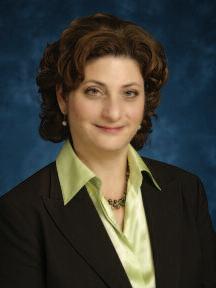
Pause for a minute and think about changes you’ve made in the last two years because of the recession
On the home front you may have foregone those shopping trips to Macy’s or reined in your monthly dinner and theater habit On the office front, you may have opted for a l o c a l c o n f e r e n c e o v e r a m o r e c o s t l y o n e i n v o l v i n g travel, or maybe you put a hold on upgrading that ancient copier at least for now
Whether at home or in the office, today’s challenging and uncertain economy has kept our focus firmly on cost containment, competition and value
The name of the game is survival, it’s true However, survival mode has had a bigger effect than simply scaling back on spending; it’s broadened our thinking as well Things we once thought of as optional have become necessities as we strive to simplify and streamline our businesses. Things that may have once seemed peripheral to the way our profession functions have become very much centers of attention.
Take sustainability. Just as the subtitle to the “Centers for Sustainability” cover story in this edition states, the issue is “not just for tree-huggers anymore ” What started out as a dogood initiative is increasingly being touted as a way to cut costs and improve workflow From big name firms to the sole practitioner, the idea of “saving” is bounding beyond an environmental context to embrace matters close to all our hearts as CPAs and finance professionals superior performance, heightened productivity and contained costs
Along the same lines, IFRS continues to creep into our workplaces Whether or not the United States adopts the international reporting standards, the fact that the rest of the world is jumping on the bandwagon has us carefully watching developments. No matter the timeframe or outcome, IFRS may have impacts we don’t even realize yet; a client’s global connection may require some IFRS knowledge To learn more, the “IFRS Insider ’s Top 10” on page 16 provides you with executives’ tips for IFRS transition success
If we take a good hard look at ourselves we just might find there’s been more positive change in the last two years than we thought there would be It just might be that what we’re doing to survive is actually helping us to thrive
INSIGHT is the official magazine of the Illinois CPA Society, 550 W Jackson, Suite 900, Chicago, IL 60661, USA Its purpose is to serve as the primary news and information vehicle for some 23,000 CPA members and professional affiliates Statements or articles of opinion appearing in INSIGHT are not necessarily the views of the Illinois CPA Society The materials and information contained within INSIGHT are offered as information only and not as practice, financial, accounting, legal or other professional advice Readers are strongly encouraged to consult with an appropriate professional advisor before acting on the information contained in this publication It is INSIGHT’s policy not to knowingly accept advertising that discriminates on the basis of race,religion, sex, age or origin The Illinois CPA Society reserves the right to reject paid advertising that does not meet INSIGHT’s qualifications or that may detract from its professional and ethical standards The Illinois CPA Society does not necessarily endorse the non-Society resources, services or products that may appear or be referenced within INSIGHT, and makes no representation or warranties about the products or services they may provide or their accuracy or claims The Illinois CPA Society does not guarantee delivery dates for INSIGHT The Society disclaims all warranties, express or implied, and assumes no responsibility whatsoever for damages incurred as a result of delays in delivering INSIGHT INSIGHT (ISSN-1053-8542) is published six times a year, in February/March,


33% Percent of banks that have gone to market to raise capital or will go to market to raise capital in the next 12 months
Source: Grant Thornton
Your business’ credit score is just as important as your personal credit score when it comes to making it in today ’ s marketplace. In fact, business credit scores can impact everything from loan interest rates to insurance p r e m i u m s , Black Enterprise’ s M a n a g e m e n t A d v i c e column reports Often referred to as commercial risk scores, business credit scores provide an overview of a company ’ s level of financial responsibility, assessing everything from payment histories and industry risk to delinquencies and collections
Visit the following sites to access your business credit report today:
n Experian BusinessCreditFacts.com & SmartBusinessReports.com

n Dun and Bradstreet ’s education center SmallBusiness.dnb.com
n Equifax’s small business website Equifax.com/small-business/home/
While the majority of financial execs can't resist calling into the office during their vacations, it seems that more are making an effort not to, a new Robert Half Management Resources survey suggests Sixty-nine percent of CFOs, in fact, said they check in with work during their time off, down from 74 percent five years ago Eighteen percent said they check in several times a day; 15 percent said they check in once or twice a day; 12 percent said they check in several times a week; 24 percent said they check in once or twice a week; and 26 percent said they don’t check in at all

Size isn’t everything In fact, here are eight ways in which sole practitioners and small firms are staying competitive Creating a personal brand. Smaller firms are building individual renown through publishing, networking and speaking engagements, and by focusing on developing expertise in a core specialty. Developing/disseminating intellectual capital. In large firms, there's usually only a handful of partners who create all of the intellectual capital, and everyone else feeds off it
Focusing on quality conversations Smaller firms talk with clients often, and know how to hold engaging conversations
Striving for success, not perfection When you ’ re short on resources, you have to focus on delivering the solution that works not the solution that’s most comprehensive or flashy
Learning to focus on value-added activities For a sole practitioner, every single activity has to contribute directly to the project ’ s goals and deliver value to the client
Taking responsibility for personal development
Without mandatory training, seminars, classes, etc , independents must think about the skills they need
Organizing around clients. Large firms have to organize around geography, practice groups, industry sectors and areas of expertise Independents, on the other hand, are always organized around one essential dimension: The client
Acting like it ’s their money. For independents, every cent spent on expenses is a cent that doesn’t go into their pockets.
Source: CPATrendlines.com

® ToemployeeslikeChadPerkins,it’smorethanjustapaycheck.It’satickettoabrighter future.That’swhyADPisthepreferredpayrollproviderformorethan400,000small businesses.RUNPoweredbyADPPayrollforAccountantswasdesignedspecificallyfor accountingprofessionalslookingforabetterwaytoprocesspayrollfortheirclients.Discover howADPcanhelpyourclients’employees,theirbusinesses—andyourpractice—thrive. accountant.adp.com1-866-4ASKADP ©2010ADP,Inc.TheADPLogoisaregisteredtrademarkofADP


 ChadPerkins COO NtegratedSolutions Dallas,Texas
ChadPerkins COO NtegratedSolutions Dallas,Texas
Search queries made through Twitter every day, placing it in second place behind search leader Google
Source: Socialnomics.net

The Cleantech Group™ and Deloitte LLP have released 2Q 2010 results for clean technology venture investments in North America, Europe, China and India Totaling $2 02 billion across 140 companies, these preliminary results reveal that clean technology venture investments continue to gain strength, seeing a 43-percent increase from 2009, and a 65 percent increase in first-half 2010 investments The leading sector by amount invested was solar ($811 million, 26 deals), followed by biofuels ($302 million, 13 deals), smart grid ($256 million, 11 deals) and energy efficiency ($147 million, 31 deals)
The Financial Industry Regulatory Authority [FINRA org] is warning investors about internet-based Ponzi schemes called high-yield investment programs (HYIPs), which promise returns of 20, 30, 100 or more percent per day The recently exposed Pathway to Prosperity scheme, which allegedly defrauded $70 million from more than 40,000 investors in over 120 countries, illustrates the con artists’ worldwide reach and proliferation In fact, the FBI reports that the number of new HYIP investigations increased more than 100 percent from FY2009 to FY2008 Visit FINRA org for more information
As if interviewing for jobs isn’t stressful enough, successful candidates have salary negotiations to contend with as well These six steps will help you navigate the salary landmine
1. Never quote a figure. You may outprice yourself from the position or leave money on the table Let the hiring company extend an offer as a starting point for discussion
2 Always be truthful Salary information can be checked out with a quick phone call to your former employers
3 Research the industry norm To judge an offer, you need a rough estimate of what the job should pay.
4 Know the hours involved Find out whether you receive overtime or compensatory time off for working more than the specified number of hours
5. Ask about reviews. Your salary should be reviewed on a regular basis, usually annually Ask how much you can expect to earn after one, two, three or more years
6 Assign a value to benefits Benefits add a lot to your base pay Find out exactly what the benefits package includes and how much of the cost you will be asked to carry
This calculator app for Windows Phone users offers all the features needed to tackle financial and statistical calculations. Built on a powerful calculator base, Panoramic Financial Calc also offers 10 financial worksheets and two statistical worksheets for linear and exponential regression calculations, graphing and analysis Additional features include 10 calculator worksheets to help in solving common financial problems; five display options; five calculator modes; copy-and-paste functionality to transfer results to other programs, such as Excel and Word Option; easy-to-use, fingerfriendly touch menu systems for quick and intuitive navigation with touchscreen devices; a Record Tape option to output a text record of all calculations for later review; five custom skins; and "Smart Input" technology, which prevents you from entering invalid expressions, etc Panoramic Financial Calc is available for download for $6 99 from marketplace windowsphone com
Expectations about corporate growth turned positive this year, according to an Ernst & Young LLP survey measuring attitudes about key economic and performance indicators among US companies with $500 million to $3 billion in total revenues Seventy-five percent of senior executives indicated that they ’ re optimistic about achieving their companies’ growth expectations over the next two years, with 58 percent anticipating profit increases this year More than half (55 percent) of all respondents said domestic operations will drive revenue growth, with another 39 percent indicating a combination of domestic and international operations The industries most likely to experience growth in both revenue and profits are technology (74 percent revenue, 72 percent profitability), financial services and retail/ wholesale (both 69 percent revenue, 63 percent profitability) Financial services companies reported the highest average revenue growth rate

The IRS’ National Research Program heralds an expanding array of payroll tax areas under scrutiny
Al t h o u g h t h e I n t e r n a l R e v e n u e S e r v i c e h a s labeled an initiative publicized last year as “increased payroll tax audits,” the scope of the audits i s m u c h b r o a d e r t h a n s i m p l y e x a m i n i n g f o r m s 941, employer ’s quarterly federal tax return As part of a National Research Program (NRP), the audits will look at five areas: worker misclassification (employee versus independent contractor), fringe benefits, officers’ compensation, employee reimbursement plans, and non-filers Other areas a l s o m i g h t b e c o v e r e d , a n d t h e r e s u l t s s h o u l d inform an IRS decision on whether to expand the n u m b e r o f a u d i t s b e y o n d t h e 6 , 0 0 0 o r i g i n a l l y announced The demographics of the 6,000 will i n c l u d e l a rg e a n d s m a l l b u s i n e s s e s a n d t a xexempt entities.
Based on my own anecdotal experience, the proposed deficiencies can be quite large, with back-up withholding and Internal Revenue Code Section 6662 negligence penalties added to the tax deficiency in some situations.
H a r v e y C o u s t a n , C PA is an Ernst & Young retired partner who currently consults on substantive technical and professional standards issues An ICPAS member since 1986, he has also appeared as an expert witness on several cases

T h e I R S h a s i n d i c a t e d t h a t t h e p r i m a r y a u d i t goals are to reduce the “tax gap” by increasing tax c o m p l i a n c e a n d p a y r o l l t a x c o l l e c t i o n s , a n d t o r e d u c e t h e n u m b e r o f m i s c l a s s i f i e d e m p l o y e e s who have been treated as independent contractors The IRS will assign 200 to 300 of its most experienced agents to the task, with each of them receiving specialized training
Given the upcoming audits, it’s a good idea for employers to review compliance and substantive issues in the areas of focus Even if they’re not amongst those employers chosen as part of the initial NRP initiative, these reviews may lead to significant savings and greater confidence that goals will be met If non-compliance is revealed in any area, remedial steps prior to IRS scrutiny may avoid long and costly IRS audits.
Now, for a closer look at some key areas of focus:
For a long time, the IRS has used a common-law-factor approach to worker classification, as spelled out in Revenue Ruling 87-41 (87-1CB 296) Specifically, the approach determines the classification of service providers as either employees or independent contractors, and determines whether the service recipient has the right to direct and control the service provider ’s actions
More recently, IRS Publication 1779, Independent Contractor or Employee, has grouped the more relevant factors into main categories The IRS has emphasized that it’s the right to control rather than the exercise of control that’s crucial in the following two areas: First, behavior control, or instruction on how, when, or where the work is performed and what tools
or equipment will be used The more extensive the instruction, the more the service recipient’s level of control. Second, financial control, or the extent of the worker ’s investment in the work and the fact that a worker can realize a profit or incur a loss on the assignment (both indicating an independent contractor). Publication 1779 also indicates that the relationship of the parties the receipt of benefits normally provided to employees and the presence of a written contract indicating the parties’ intent also will be a critical category.
Where an IRS audit determines the misclassification of a service provider, Section 530 (Revenue Act of 1978) relief still may be available to avoid employment tax oblig a t i o n s R e q u i r e m e n t s f o r r e l i e f i n c l u d e : The fact that a reasonable basis exists for misclassification; the issue was previously addressed in an audit; substantive consist e n c y c a n b e s h o w n ( i n o t h e r w o r d s , a l l workers in similar situations were handled the same way); and there is reporting consistency, such as reporting on Form 1099.
This is a complicated area Some employers try to include certain perquisites provided to their employees in categories that a r e n o t t a x a b l e u n d e r I n t e r n a l R e v e n u e C o d e S e c t i o n 1 3 2 C l u b m e m b e r s h i p s , t r a v e l e x p e n s e s f o r s p o u s e s a n d c e r t a i n uses of company cars are commonly misclassified as nontaxable benefits.
I R C S e c t i o n 1 3 2 c o n t a i n s e i g h t c a t eg o r i e s o f n o n t a x a b l e f r i n g e b e n e f i t s t h a t often require strict adherence in order to qualify They include:
1 No additional cost service (excess capacity services, e g phone service)

2 Qualified employee discounts (e g 20 percent of the price charged for services)


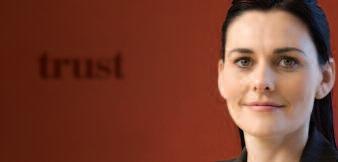
3. Working condition fringe (e.g. the value of business usage of an employer-provided automobile).
4 De minimis fringe (e g occasional meal m o n e y t o e n a b l e e m p l o y e e s t o w o r k overtime)
5 Qualified transportation fringe (e g certain parking on or near the employer ’s business premises)
6 Q u a l i f i e d m o v i n g e x p e n s e r e i m b u r s ement.
7. Qualified retirement planning services.
8. Qualified military base realignment and closure fringe.
Providing the necessary documentation to support why a particular benefit should be included in one of these categories is crucial in convincing an IRS agent.
Conduct a substantive review of the total compensation packages of each officer, particularly owner-employees Several items may not be accounted for as compensation and therefore won’t appear on an officer ’s W-2 Loans and executive travel along with retirement arrangements and other nonqualified deferred compensation plans (particularly in the area of Internal Revenue Code Section 409A compliance) should be included in the review As pointed out in a 7th Circuit Court of Appeals decision (Menard, CA-7, No. 08-2125, March 10, 2009), what’s important is that the total compensation is reasonable
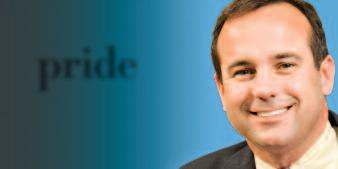


The regulations covering employee reimbursement plans require employees to prov i d e e m p l o y e r s w i t h
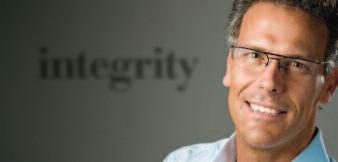
r o
r a

n t i n g . F u r t h e r m o r e , t h e r
b
r
d a m o u n t s must represent proper business expenses Payroll tax audits (and other described areas) have already begun. Even if a spec i f i c e m p l o y e r i s n ’t s e l e c t e d f o r a u d i t a s p a r t o f t h e N R P, i t ’s w i s e t o r e v i e w t h e a r e a s I ’ v e m e n t i o n e d h e r e P a r t o f a n y internal control review should include this type of evaluation, and subsequent to NRP 6,000 audit completion, it’s possible that t h e I R S w i l l c o n t i n u e t o e x a m i n e t h e s e same areas.
Update: In my August col umn, I was qui te c e r ta i n th a t, h a v i n g a l r e a dy pa s s e d th e House, HR 4213 woul d pass the Senate i n a short peri od of ti me HR 4213 i s most frequ e n tl y m e n ti o n e d by ta x pe o pl e f o r i ts carri ed i nterest provi si ons, but I descri bed s o m e o th e r pr o v i s i o n s th a t w o u l d a f f e c t payrol l tax es for servi ce subchapter S corporati ons and partnershi ps Si nce that column was wri tten, the bi l l has hi t a roadbl ock i n the Senate At the ti me of thi s wri ti n g , s o m e s e n a to r s a r e o bj e c ti n g to th e areas I di scussed and others want to revi se the carri ed i nterest rul es I i ndi cated that I woul d keep you i nformed of the progress o f HR 4 2 1 3 o r o th e r c h a n g e s th a t m a y i m pa c t S E ta x pl a n n i n g . T h i s i s th e f i r s t update Al though I sti l l bel i eve chances of passage i n some form are better than 5050, I am not as confi dent as I was
Where do you draw ethical boundaries in a down economy?
Times are tough The tight labor market, client fee sensitivity and talent retention issues are major factors businesses now face, and the accounting profession is no exception. As fiduciaries, accountants are concerned not only with their own business practices, but also with those of their clients. Distressed businesses are stressed businesses, each of them facing difficult ethical decisions on a daily basis
Over the past 20 years of relative prosperity, the rationale for fraud ran along the lines of self-enrichment and entitlement; in other words, the “I need to get my share, too” mentality Just look at celebrity CEO fraudsters who live lavishly and treat their business’ coffers as though they were private funding accounts
Today, however, we’re seeing a dramatic shift in rationale Owners and managers are facing possible extinction if they miss financial covenants, and are being confronted with creditor demands for quicker repayment. “Aggressive” accounting practices are therefore surfacing
Simply put, more businesses are trying to alleviate the effects of shrinking revenue bases, reduced cost structures and greater competition. As human beings, we see the clear difference between the business owner who misrepresents financials to add another Monet to his/her collection and the business owner who misrepresents financials to keep the business afloat Creditors and other fraud victims, however, don’t necessarily make this differentiation After all, fraud is fraud
is the managing member of The Sargent Consulting Group, LLC, which specializes in forensic accounting and financial investigations Brad is a frequent lecturer on forensics and fraud, and is chair emeritus of the American Board of Forensic Accounting He also serves on the Board of Directors of the Illinois CPA Society, and has been a member of the Society since 2002
M a r t i n , Brown, Sullivan, Roadman & Hartnett, Ltd , which specializes in white-collar criminal defense, SEC investigations, healthcare fraud and tax fraud defense, has witnessed the change in the landscape firsthand Roadman explains that, “When times are t
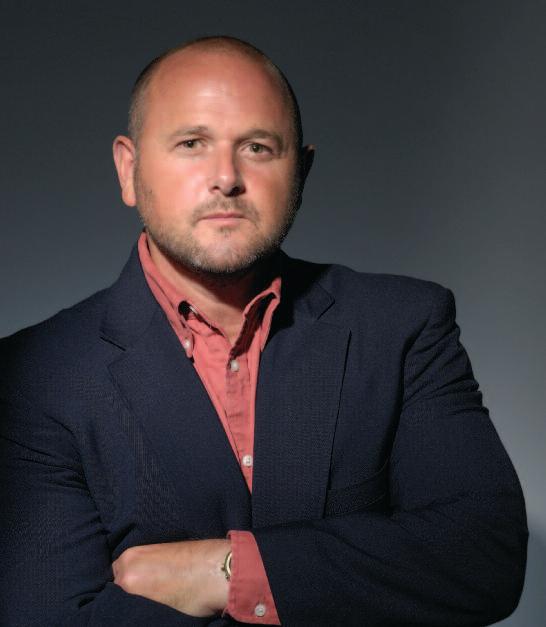
o
, s o m e p e o p l e w h o w o u l d o t h e r w i s e n e v e r c o n s i d e r doing something wrong cross the line While meeting one’s obligation to pay employees or suppliers is the right thing to do, funding those payments with money obtained fraudulently is still wrong Increasingly, people who are desperate to keep their businesses going choose wrong over right because closing their business is the only other alternative they see.”
This, in a nutshell, is the unique nature of the shifting ethical boundary. At what point d o e s a n a c c o u n t a n t s a y, “ E n o u g h ! ” ? I t depends on the situation.
I constantly remind the professionals I teach to listen to their inner voices or to take note of the queasy feeling that comes over them If something just doesn’t seem right, there’s usually a good reason for it Step back and evaluate deeper Avoid playing the role of psychologist by guessing others’ intentions And definitely avoid playing the role of confessor, forgiving others’ transgressions Clients retain financial experts for their accounting acumen and insights, not to act as their consciences Stick to what you know best: The numbers The numbers are black and white and have no motive or rationale Forensic accountants factor the human element into every investigation but rely on the numbers to tell the story
Broaching an ethical boundary, as is the case in most fraudulent schemes, typically s t a r t s o n a m o d e s t s c a l e I n f a c t , e t h i c a l boundaries are rarely stretched at a single transaction. Have you been asked to stand behind a number you know isn’t accurate? Have you taken part in accounting that is increasingly aggressive and, if so, did you stand by or say something?
As the government prosecutes overly aggressive accounting practices more and more, the marketplace continues to grow increasingly hostile towards financial chicanery This trend also is trickling into the private/civil sector as organizations internally fight for survival Stakeholders are willing to pursue deals gone bad when they suspect they’ve received bogus financial data
R e m e m b e r, b o t h w h a t i s e t h i c a l a n d what constitutes aggressive accounting are p u r e l y s u b j e c t i v e m a t t e r s I f s o m e t h i n g troubles you, don’t let someone else’s ethical template sway you Fraudsters love to act in a vacuum, so taking a stand at the onset is the best defense against answering tough questions years (and dollars) later
B e w i l l i n g t o d i s c u s s a s i t u a t i o n w i t h someone you trust, like a supervisor, a sign i f i c a n t o t h e r o r a c o l l e a g u e O f t e n , t h i s independent third party can give you object i v e i n s i g h t i n t o w h e t h e r y o u r c o n c e r n s are legitimate.
Most importantly, don’t live in an ethical grey area where your opinion is swayed by popular opinion; keep your ethical boundaries clear and present.
The Illinois CPA Society is seeking recommendations for the 2011 Lifetime Achievement Award, which is presented each year to a individual(s) who has provided distinguished service to the profession in Illinois and/or nationally.


Candidates are selected based on a lifetime of service to the profession. Factors to be considered include:
> Contribution to the profession
> Professional position attained
> Length of service



> Illinois professional involvement

2010 Edilberto C. Ortiz
2009 Cameron T. Clark
Duane D. Suits
2008 Belverd E. Needles, Jr.
2007 Edwin Cohen
2006 Richard T. Sullivan
2005 Vincent E. Villinski
Richard E. Ziegler
2004 Lawrence M. Gill
Jerome A. Harris
Cheryl S. Wilson
Letters of recommendation with information supporting the individual’s qualifications (resume, biography, etc.) can be sent to:

Eileen Robbs, Lifetime Achievement Award, Illinois CPA Society, 550 W. Jackson Blvd., Suite 900, Chicago, IL 60661 Or by email to: robbse@icpas.org
Deadline for recommendations is December 15, 2010
Look beyond traditional employer plans for retirement savings.
Is the US workforce saving for retirement? The Employee Benefits Research Institute (EBRI) tried to shed some light on this question when it analyzed 2008 US Census Bureau data. The good news: The EBRI found that about 61 million people participated in employersponsored retirement plans, out of some 78 million people who actually worked for those employers. The bad news: The US workforce numbers approximately 153 million workers In other words, nearly 92 million workers in 2008 needed to develop their own retirement savi n g s p l a n s H o w m a n y o f t h o s e p e o p l e d o y o u think actually set anything aside?
I imagine that most of our clients are still contributing to their employer-sponsored or individual plans in spite of the economic downturn Some may be setting aside just enough in their 401(k) plans to get the largest employer matching contribution But even those who are setting aside the maximum may be falling short
I ’ v e w r i t t e n b e f o r e a b o u t t h e 4 - p e rc e n t w i t hdrawal rule: A retiree can draw down as much as 4 p e rc e n t o f a s s e t s a n n u a l l y t o m e e t l i v i n g expenses, adjusted for inflation, and be fairly confident that he/she won’t run out of money

is a principal in the financial advisory firm of Reason Financial Advisors, Inc
His 25+ years of finance and accounting experience includes 13 years in personal financial planning An ICPAS member since 1982, Mark currently serves in the Society ’ s IA/PFP Member Forum Group and on its Committee on Structure and Volunteerism
Some research has suggested that the 4-percent withdrawal rate can be increased, with somewhat less confidence, to as much as 5 5 percent or 6 percent This rule-of-thumb varies from individual to individual, however For the sake of this example, though, let’s assume that a soon-to-be-retired c l i e n t n e e d s f i r s t - y e a r l i v i n g e x p e n s e s o f a b o u t $ 6 0 , 0 0 0 , a n d e x p e c t s t h a t S o c i a l S e c u r i t y w i l l meet about $20,000 of that amount The client will receive no other pension benefit Therefore, the withdrawal rule predicts that he will need a pool of assets upon retirement equal to a range of about $667,000 (6-percent withdrawal) and $1,000,000 (4-percent withdrawal) In future retirement years, this rule allows living expenses to increase for inflation This example doesn’t take into account the impact of income taxes on withdrawals from tax-deferred accounts, however
In any event, a high six-figure or low seven-figure account balance can be a daunting goal for somebody seriously planning for retirement Which means that anyone planning for retirement has to develop a savings and investment program, and stick to it
Employer-sponsored plans are a great vehicle for this since they offer many or all of the
employer match, diversified investment choices, and professional management of savings and investment accounts
But even setting aside maximum contributions in an employer ’s plan may not meet the target account balance at retirement Investment performance could be poor, the client
may leave their employer and therefore not participate in the plan fully, or the target account balance may just be too large Added to that, not all clients have the opportunity to participate in a plan C
employer plans Here are five top strategies you can share with them:
I n 2 0 1 0 , p e o p l e n o t c o v e r e d b y a n e m p l o y e r ’s p l a n m a y m a k e t a xdeductible contributions of as much as $5,000 annually ($6,000 if age 50 or older) to an IRA, assuming they have earned income of at least the amount contributed All workers with earned income may make nondeductible contributions to IRAs in the same amounts People with modified adjusted gross income (MAGI) below $167,000 may make nondeductible contributions to Roth IRAs of the same amounts (Limits for Roth IRA contributions decline as income increases until they reach -0- when MAGI exceeds $177,000 ) Roth IRAs may be particularly attractive to clients who expect their tax bracket to be substantially higher in retirement than it is now
Self-employed individuals may make tax-deductible contributions to SEPIRAs of the greater of $49,000 or 20 percent of adjusted earned income, although limits are reduced if contributions are also made to regular IRAs or employer plans. There are further limits depending on the amount of compensation paid SEP-IRAs represent a great savings vehicle for self-employed writers, consultants and artists who run their own businesses in addition to working for an employer
Clients should create their own savings programs and try to replicate some of the features of employer-sponsored plans For example, they can direct that a portion of their regular monthly, semi-monthly, biweekly or weekly paychecks be automatically transferred to a savings or investment account. By establishing this program with a mutual fund company or brokerage firm, and further directing that the funds be used to make regular purchases of different fund investments, they will be growing their accounts in an effortless and hopefully painless way
Even since the housing bubble burst, most clients have retained equity in their homes which may be put to use in retirement The most common example is through the use of a home equity line of credit, which permits check withdrawals for as long as the line is open Another alternative available to homeowners age 62 and older is the reverse mortgage, in which the lender provides access to cash (as in a home equity line) and the loan need not be paid off until the house is sold.
This option in fact may be the only practical alternative for clients who haven’t saved enough for retirement After all, for every $10,000 reduction in retirement living expenses, the target account balance can be lowered between approximately $167,000 and $250,000
As an advisor, recognize that the multiple savings vehicles and creative alternatives I’ve covered here can help your clients gather the resources they need to meet the demands of their retirement living expenses The key, however, is f o r c l
r s o n a l f i n a n c e s Wi t h o u t t h i s knowledge, they’ll be unable to determine which tools and techniques are right for them. By starting this conversation with your clients, you can help them ensure the best outcomes in retirement and add value to your relationship at the same time.

who also are exhibiting at our 2010 Midwest Accounting & Finance Showcase on August 25-26, 2010:







It’s not as if everyone’s making the transition Plenty of you are biding your time but you’re fast becoming a minority IFRS seems a medicine many are eager to take, if only to get past that first painful swallow.
Ben Resch, Midwest IFRS technical leader for Deloitte, sees companies at both ends of the spectrum jumping into the IFRS fray. “Our public company clients have seen the SEC talking about IFRS for five years. For awhile, they were uncertain as to whether it would be mandatory in the United States Now they’re seeing the SEC is serious and they’re starting to figure out what IFRS means for their company It’s not too soon ”
At the other end of the spectrum Resch sees smaller companies that have been purchased by an international investor (much more common in times of economic upheaval, which the United States has been experiencing) These companies find themselves, seemingly overnight, staring IFRS reporting requirements in the face
From those in the trenches, then, here are 10 tips for IFRS transition success
Last-minute cramming will get you into trouble “Basically it’s a new cookbook,” says Dr Barry Epstein, IFRS expert and partner in CPA firm Russell Novak & Company “A company has to commit its entire accounting staff to understanding the standards IFRS is not something that just the VP of finance can study, because everything else will not just mechanically fall into place There will be a greater use of judgment at all levels of the organization with IFRS, and people will need to be educated in applying that judgment ”
“Even though the United States hasn’t decided on IFRS, the rest of the world (including your foreign ops) is going there ahead of you,” says Jack Klingler, director of accounting research and IFRS implementation for Alcoa “If you let that happen in a vacuum, you’ll have policies in place that you may not want and will have to reverse or change You need to start caring now about financial reports you file in other areas of the world that you might not have cared about in the past, because they’re determining how things will be done under IFRS in your global organization ” Klingler recommends a steering committee with members from treasury, internal audit, the comptroller ’s office, auditors, business unit CFOs, and the like.

3. Cast the net wide
Matt Birney, IFRS policy and implementation manager for United Technologies Corporation (UTC), recommends thinking through who should be at the table with a broad perspective “Legal has to be there to help you sort out reporting requirements compliance, financial planning and analysis professionals are likely to be the group that’s first impacted They’re going to have to forecast in IFRS before any other area even begins to report in IFRS Include them early ”
Resch agrees, explaining that, “When we do an IFRS assessment for companies, it’s not unusual to have 20, 30 or 40 people to interview. And if you’re a company that does a lot of R&D, you’re in new territory because these people will be an integral part of your accounting. Under IFRS, you capture product development costs, put them on the balance sheet and amortize them over future years Under US GAAP these items would have been immediately expensed You’re going to start to need much more precise information from your R&D team ”
Illinois CPA Society | 2011




The Illinois CPA Society is currently seeking to recognize three outstanding educators. Two educator awards may be from 4-year schools--one from a school that offers a graduate accounting program and one from a school that does not. One educator award may be from a 2-year school.
Nominations are welcomed from any interested person (colleague, student, administrator, etc.). Nominees must be an Illinois educator at a community college, college, or university with a minimum of five years teaching experience.
Educators who are noted for their teaching abilities, but are now predominantly involved in administration or research are eligible for the award. Nominees do not need to hold a doctoral degree or be a member of the Illinois CPA Society, but must be a CPA.
The primary criteria to be considered in making the selection are the following factors:
Excellence in teaching
Student motivation and mentoring
Educational Innovation
Contributions to the academic community, and/or contributions to the accounting profession
For more information or to nominate a candidate, please visit www.icpas.org/students.htm.
The deadline for nominations is Friday, November 26, 2010.
September 24, 2010 - Rosemont, IL
Midwest Financial Reporting Symposium



September 29, 2010 - Chicago, IL
International Financial Reporting Standards (IFRS) for Small and Medium-Sized Entities



1/2 Day Program
Presenter: Marian Powers, PhD
October 18, 2010 - Chicago, IL
Designing and Implementing a Balanced Scorecard Framework
Presenter: Mark Frigo, PhD, CPA, CMA
November 10, 2010 - Chicago, IL Generations Apart...Yet Only a Cubicle Away
Presenter: Dennis L. Faurote, CPA
December 16, 2010 - Chicago, IL
Strategic Cost Analysis: Tools for Lowering Your Company’s Costs





Presenter: John W. Hill, PhD, JD
“Accounting numbers have behavioral ramifications and many companies forget that in the midst of a big transition such as this one,” says Epstein “Accounting numbers drive bonus plans. If management sees or even suspects that the numbers are changing due to the conversion, and they think it will hurt their bonuses, it will definitely affect their cooperativeness and team spirit In order to combat such sentiments companies may consider using ‘frozen GAAP,’ and explaining to management that their bonuses will remain tied to the old standards during this time of adjustment ”
“You may save yourself some problems later if you comment now,” says Klingler. “The boards of FASB and IASB have been working very hard on the various convergence projects. They’re relying on their constituents to help ensure these changes are useful and practical The feedback loop is crucial Comment on the exposure drafts that are coming out. We do and it makes a difference.”
“Assuming your company utilizes outside accountants, ask them to explain what type of training they have received on IFRS and what experience they have auditing clients that utilize IFRS,” Epstein advises. “The newer ethics rules allow auditors to opine on IFRS financial statements Make sure your auditors are qualified to do so ”
“Shortly after taking an initial look at IFRS we marked up our financial statements,” says Birney ”We wanted to know what they would look like and what we’d need to disclose under IFRS We looked at peers in Europe to see what information we would have to have on hand and what we’d need to collect in addition to our current data collection to be IFRS compliant We found the length of our statements effectively doubled You need a separate footnote for each line item on your statements It’s a tremendous amount of information and some of it we don’t currently collect So we’ve begun to plot system modifications to plan ahead.”
Some entities are required to file reports based on US GAAP and IFRS “As a government contractor, we realized when IFRS goes live, we may have to report through the SEC via IFRS and through US GAAP for things like tax reporting,” says Birney “Initially, it never crossed my mind that this would involve our government accounting people Now I realize they’re going to need data for US GAAP that I was planning on not having to collect or compile ”
“Getting all the puzzle pieces on the table ahead of time is key to success,” says Resch. ”Europeans have gone through this change already If you have European management that has been through IFRS, bring in those executives to help you figure things out. It will pay off in the long run ”
“The typical company has a number of contractual arrangements driven by accounting numbers,” says Epstein. “Companies that borrow have debt covenants that include debt equity ratios and the like As IFRS will certainly affect some of these ratios, companies should be proactive about approximating results under IFRS and discussing those projected numbers with their banks If covenants need to be renegotiated, companies will likely find it easer to come to an agreement on the new terms if their banks are made aware of the potential ramifications of converting to IFRS at the outset ”

Overall, say our experts, dive in now. “This is the biggest change in accounting in my entire lifetime,” says Epstein “So I understand why people are afraid and want to push conversion off. However, accountants who hope to continue to work in their field need to start to embrace it now because a mandated change is coming ”
“Once the decision is finalized by the SEC to move forward with IFRS, this becomes a short-term transition,” says Resch “The European Union did it and is now seeing benefits. We’ll see those same benefits. It will be disruptive and difficult in the short term, but the other side of it is streamlined and beneficial ”
These online CPE sponsors offer A+ educations at the click of a mouse
By Derrick LillyBetween work, commutes, family obligations and countless other responsibilities, finding any free time for anything is a challenge But with more and more continuing professional education (CPE) sponsors offering online courses and self-study resources, fulfilling mandatory CPE requirements on your own time is now easier than ever.

If you prefer to receive your continuing education from an organization you’re professionally connected to, make the American Institute of Certified Public Accountants (AICPA) and the Illinois CPA Society (ICPAS) your first ports of call
For those still using the AICPA’s text, DVD and software selfstudy materials, the association has developed an online CPE g r a d i n g w e b s i t e [ c p e g r a d i n g a i c p a o rg ] t h a t a l l o w s y o u t o complete the corresponding examinations and course evaluations online as an alternative to mailing in your exams for grading. By utilizing this site you gain access to instant exam results and printable CPE certificates A d d i t i o n a l l y, t h e A I C PA C P E x p r e s s s u b s c r i p t i o n s e r v i c e o f f e r s u s e r s u n l i m i t e d a c c e s s t o t h e a s s o c i a t i o n ’s p r e m i u m o n l i n e l e a r n i n g l i b r a r y, w h i c h f e a t u r e s m o r e t h a n 9 0 0 c o u r s e s . A I C PA m e m b e r s r e c e i v e a l a rg e d i s c o u n t , p a y i n g only $180 compared to $435 for non-members. Highlights i n c l u d e u n l i m i t e d 2 4 / 7 a c c e s s ; o n e a n d t w o c r e d i t h o u r courses typically completed in one to two hours; a customizable course catalog; the ability to bookmark your progress and print CPE certificates on demand; and free quarterly Tax, A&A, SEC, Governmental and Not-for-Profit updates. What’s m o r e , y o u c a n e a r n t w o C P E c r e d i t s d u r i n g a f r e e t r i a l o f AICPA CPExpress by visiting cpa2biz.com.
W h i l e o f f e r i n g t r a d i t i o n a l i n - h o u s e c l a s s e s , c o n f e r e n c e s and events, the Illinois CPA Society also offers online education options to both members and non-members By partnering with Society InSight through LearnLive Technologies, the ICPAS is able to provide a wide range of webcasts and ondemand courses developed by the Illinois CPA Society and fellow state CPA societies
Broadcast live and presented by leading experts, the interactive webcasts provide a convenient and flexible means to view, listen to and participate in educational programs and discussions about the hottest topics and most current issues in the accounting world and all from the comfort of your personal computer Programs are offered individually, range in price from $39 to $100, and provide between one and four CPE credit hours
To learn more about webcasts and other online CPE programs, visit the “Education & Events” section at icpas org
















“Online CPE is, by far, becoming the selfstudy CPE option of choice amongst CPAs,” s a y s Va l e r i e We n d t , p r o d u c t m a n a g e r f o r
Bisk Education Inc. “An online CPE course c a n p r o v i d e e x c e l l e n t l e a r n i n g , i n s t a n t feedback on their progress, instant grading o f t h e i r f i n a l e x a m s a n d , i n m o s t c a s e s , instant certification.”
Bisk has awarded more than 14 million CPE credits since 1971, and currently offers in excess of 300 CPE programs, which it delivers through a variety of formats CPEasy OnDemand™, for example, is an annual subscription service that provides unlimited access to the company’s comprehensive online library of individual CPE courses for unlimited CPE credit. It’s offered at three subscription levels: Silver ($450), Gold ($499) and Platinum ($639), each of which provides 24/7 access to online CPE courses ranging from 1 to 24 credit hours.
CPEasy OnDemand™ features include streaming video and audio, interactive Q&A sessions, monthly news reports and quarterly live webcasts Bisk’s research tools also allow users to find any topic or subtopic within the CPE library, and print any page or quiz for offline reference. CPEasy OnDemand™ further includes a CPE tracker that organizes your mandatory CPE credits, and instant grading and certificate printing so you don’t have to wait to receive your results or certificates by fax or mail
Additionally, Bisk CPEasy offers firm-wide t r a i n i n g s o l u t i o n s t h a t h e l p f i r m s r e c r u i t , retain and motivate their staff Through its award-winning CPA Review program and its CPE Network monthly DVD training programs, Bisk offers firms the opportunity to build solid infrastructures
Visit cpeasy.com for more information.
Like Bisk, CPE Depot offers membershipbased access to online CPE courses. And while its website isn’t as flashy or interactive as those of some providers, CPE Depot is a bit easier on your pocketbook A one-year self-study membership runs a mere $149 and grants you unlimited access to more than 175 courses, including all materials related to the course content, assignments, exams and certificates of completion
CPE Depot also provides online exam grading and instant certificate of completion generation once final course exams are passed And, as an added convenience, CPE Depot places a copy of each certificate
earned in the “My Certificates” area of your account, so you can easily access printable certificates when needed
Best of all, CPE Depot offers a 30-day sati s f a c t i o n g u a r a n t e e . S o , i f y o u t r y a s e l fstudy course and find that it doesn’t meet your needs or expectations, CPE Depot will refund your membership fee as long as no CPE credits have been earned.
Visit cpedepot com for more information
Kaplan’s Total Access CPE currently includes 38 courses, awarding a total of 77 credit hours The company prides itself on providing high-quality, well-planned materials derived from expert instructors
“As a program sponsor of NASBAs Nati o n a l R e g i s t r y, o u r c o m p a n y h a s d e m o nstrated compliance with the NASBA Standards, which are a set of nationally recogn i z e d s t a n d a r d s i s s u e d j o i n t l y b y N A S B A and the AICPA,” explains Denise Probert, VP of CPA Education. “We have also met N A S B A P r o g r a m S p o n s o r r e q u i r e m e n t s , w h i c h e n s u r e s p e c i f i c c o u r s e d e s i g n a n d presentation levels are met ”
What’s more, Kaplan’s Total Access CPE isn’t overly expensive For a mere $199 users get 365 days of unlimited access to the entire library of CPE courses “Kaplan’s Total Access CPE is the affordable way to obtain meaningful CPE,” says Probert Courses are delivered in an online format that allows users to conveniently study anyw h e r e , a n y t i m e , a n d t o r e p e a t c o u r s e s , r e v i e w m a t e r i a l s a n d p r i n t o n l i n e c e r t i f icates of completion. “This allows accountants to schedule their professional developm e n t a r o u n d t h e i r b u s y s c h e d u l e s , ” s a y s
Probert “Kaplan’s Total Access CPE library p r o v i d e s i n d i v i d u a l s a n d f i r m s w i t h a n a l t e r n a t i v e t h a t w i l l p o s i t i v e l y i m p a c t t h e bottom line, while growing the intellectual wealth of the accountant ”
To review Kaplan Schweser ’s offerings, visit schweser com/cpe
Gleim Publications Inc.
S i n c e t h e d e b u t o f t h e f i r s t G l e i m C PA Review book in 1974, Gleim Publications Inc has developed and expanded its wellk n o w n e d u c a t i o n o f f e r i n g s t o m e e t t h e needs of today’s time-pressed CPAs
“More and more people use the Internet as their primary means of accessing information, and online CPE courses have become increasingly more prevalent in recent years,” says Irvin N Gleim, Ph D /CFM/CIA/CMA/ CPA and company CEO
Offerings include more than 160 internetbased interactive CPE courses with audio and visual supplements, which allow CPAs to choose the courses most relevant to their concentrations, specialties or client base
“One of the challenges facing every individual and organization is how to do more with your resources Our online CPE allows busy CPAs to stay current while maximizing their work time to better serve their clients,” says Dr Gleim
To make fulfilling CPE requirements more affordable, Gleim Publications allows its four-hour courses to be purchased in increments of one ($48), five ($160), 10 ($280) or 25 ($600) at a time. Purchased courses must be completed within one calendar year What’s more, Gleim offers users the opportunity to try out a four-hour online CPE course at no charge in order to evaluate the system and make an informed decision.
To learn more about Gleim Publications Inc and to take a free four-hour course, visit gleim.com/accounting/cpe.
To u t i n g t h e c a t c h p h r a s e , “ Yo u ’ r e g o i n g p l a c e s O u r C P E g o e s w i t h y o u , ” B e c k e r Professional Education’s webcasts and ond e m a n d s e l f - s t u d y p r o d u c t s a l l o w C P E seekers to access an extensive curriculum when it’s most convenient for them
“Becker Professional Education’s online learning provides time-management flexibility, allowing individuals to pursue professional education on their schedule and a t t h e i r o w n p a c e , ” s a y s M i k e M i r r e t t i , Becker ’s CPE program manager
Drawing on strengths developed from its leading CPA Exam Review and traditional inhouse CPE courses, Becker has expanded its CPE offerings to include innovative online products. “We have leveraged our experience to provide high-quality and relevant professional development programs in an interactive and engaging format, utilizing a cutting-edge delivery platform,” says Mirretti Becker ’s comprehensive CPE course offe r i n g s a l s o p r o v i d e c u r r e n t i n f o r m a t i o n about some of the day’s most critical and c h a l l e n g i n g b u s i n e s s i s s u e s . K e y t o p i c s include IFRS, fraud and corruption prevention, forensic accounting, risk assessment a n d s t r a t e g i c m a n a g e m e n t . Most courses award two to three credits each and cost $150, although discounts are offered for multiple purchases.
A full course catalog and course preview are available at becker.com.
The Illinois CPA Society, CPA Endowment Fund of Illinois and its Mary T. Washington Wylie Opportunity Fund have developed a program that seeks to increase the number of African Americans and other underrepresented minorities in the accounting profession by providing educational, professional and leadership opportunities for new and future CPAs.
The Fellows program is a prestigious one-year renewable appointment for a select group of young professionals who have an active interest in diversity and mentoring. Fellows are an integral part of the Illinois CPA Society’s volunteer leadership and will be connected with senior volunteer leaders to foster lasting professional relationships. They will serve as mentors to the Mary T. Washington Wylie Scholars and represent the legacy of Mrs. Washington.
Meet the Fellows:
Martrice Caldwell, CPA Senior Accountant, YMCA of Metropolitan Chicago

Pedro Diaz de Leon, CPA Senior Internal Auditor, RR Donnelley & Sons
Melissa A. Hamilton, CPA Manager, State and Local Tax, PricewaterhouseCoopers LLP
Juanita Herring, CPA Multistate Income/Franchise Senior Tax Consultant, Deloitte Tax LLP

Ajahnae Hinley, CPA Senior Audit Associate, Grant Thornton LLP
Andrell Holloway, CPA Manager, Advisory Practice, KPMG Ashlee Kuhl, CPA Senior Associate, Assurance Services, BDO USA, LLP
LaToya Locke, CPA Senior Auditor, Ernst & Young
Victoria Long, CPA Assurance Manager, Ernst & Young
Porschia Thomas-Quinn, CPA Field Auditor, Cook County

Tara Wells, CPA Senior Tax Accountant, Blackman Kallick, LLP
For more information about the program visit www.icpas.org/mtww.htm
To learn how to support the program, please contact Jacqueline Berk Babb at babbj@icpas.org.
Disruptive innovation makes the marketplace a dynamic and precarious place to be
 By Selena Chavis
By Selena Chavis
When Wal-Mart opened its doors in 1962, it revolut i o n i z e d t h e r e t a i l i n d u s t r y i n o n e f e l l s w o o p , c a u s i n g a s u rg e o f c u s t o m e r d e m a n d f o r l o w p r i c e s a n d d i s c o u n t retailing a strategy that had not been attempted on this large a scale ever before. Many department stores and specialty stores that had led their respective industries for years were left in the wake of this major market shift.
Disruptive innovation “can lower prices significantly, or it can significantly improve efficiency or productivity,” notes Michael Schamberger, audit partner with the technology industry practice at Grant Thornton “Just look at the move from film-based cameras to digital.”
“It’s a game-changer,” says Rod Shrader, associate professor of entrepreneurship at the University of Illinois at Chicago (UIC) and the founder and director of UIC’s Technology Ventures Program “In some cases, it creates a brand new industry, or it changes the way business is done.”
Take Southwest Airlines It came on the scene as a lowcost carrier, forever changing the airline industry in terms of who had access to it “The inability to pay high prices f o r f l i g h t s e l i m i n a t e d t h e o p t i o n f o r m a n y i n t h e p a s t , ” Shrader explains. “It used to be for rich people; it used to be that families of five would never get on a plane ”
While the concept isn’t new, the term “disruptive innov a t i o n ” w a s f i r s t c o i n e d a n d d e f i n e d b y C l a y t o n C h r i stensen in the 1990s in his books The Innovator's Di l emma and The Innovator's Sol uti on, where he analyzed and defined how companies approach growth and innovation
“Disruptive innovation is not to be confused with incremental process improvements, cost containment, etc By its nature, disruptive innovation generates a fundamental shift in the market by creating an opportunity, products and services, or market where none previously existed,” explains Mike Myatt, managing director of N2growth, a leading venture growth consultancy. “It either addresses an unmet need, creates a need, or meets a need in a radically better way than presently exists ”
Examples of industries ripe for disruptive innovation abound Here’s a summary of just a few of them
Healthcare
The healthcare industry is a definite hotspot, says Schamberger Specifically, innovation has centered on the implementation of electronic health records a sector that really didn’t exist in the software industry over a decade ago Experts are expecting this area to continue to explode in the coming years as the government continues to push forward its healthcare agenda
“Doctors are going to have to do this,” Schamberger emphasizes, pointing out that the 2010 American Reinvestment and Recovery Act set aside $30 billion to push the development and adoption of health information technology.
“Whether advancing technology leads to totally new products or services coming to the market, or creating new markets for existing products or services, technology is driving the most disruptive innovation today,” says Myatt. Cloud computing, or Software as a Service (SaaS) models, is a prime example, creating a whole new area of business and subsequently leaving some companies in the dust. The older, more expensive model of selling
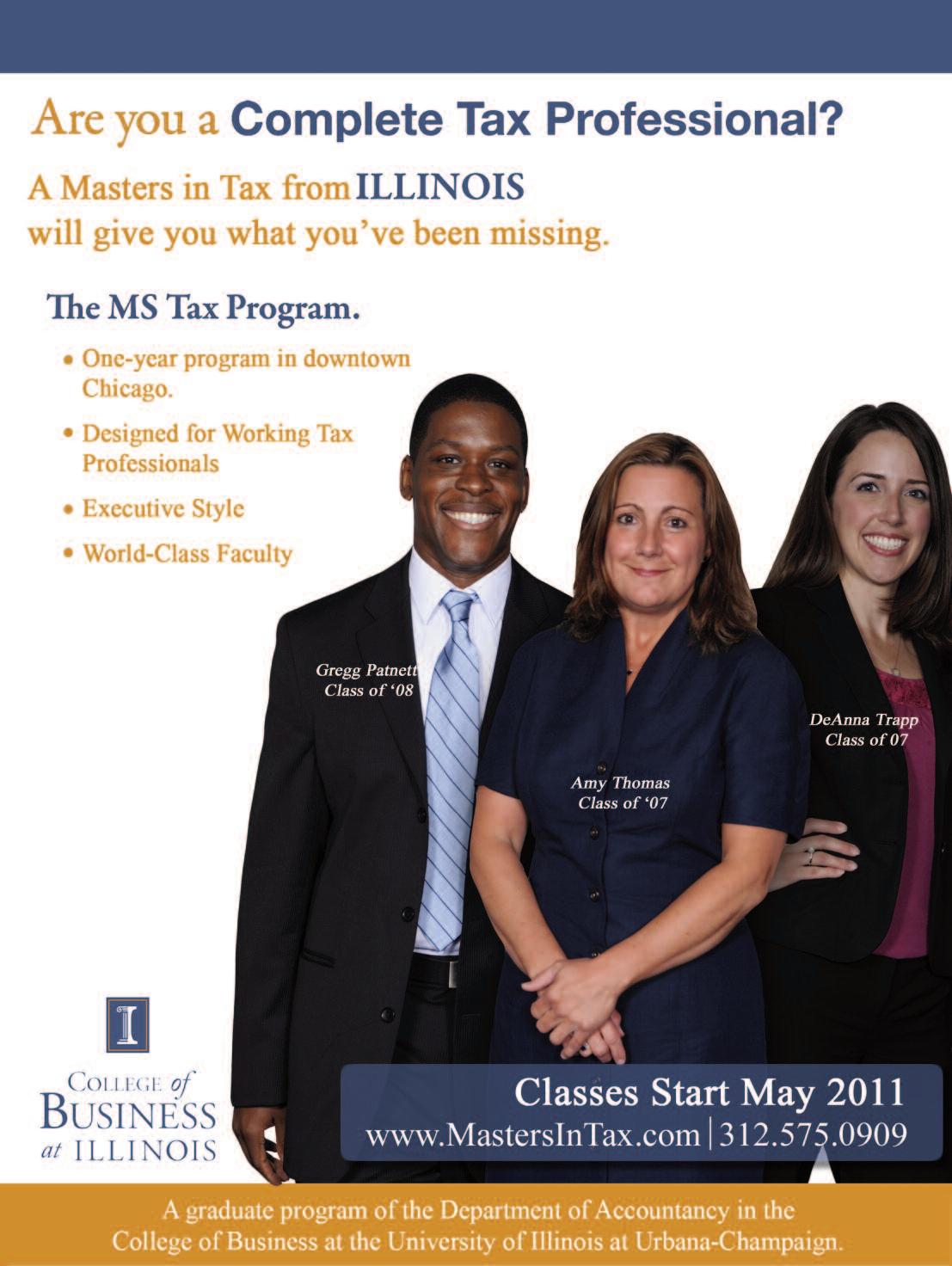
s o f t w a r e l i c e n s e s t o c l i e n t s i s b e i n g replaced by the more efficient method of h o s t i n g a c o m p a n y ’s d a t a o n a s o f t w a r e company’s server.
“Over time, some will stick to their guns w i t h o l d t e c h n o l o g y a n d e v e n t u a l l y d i e , ” says Schamberger “Some will be willing to evolve and start investing in new technology and business models ”
The areas being impacted by technological advancements are many For example, the evolving landscape of cellular phones a n d h o m e g a m i n g s y s t e m s f e a t u r e n e w technology and product enhancements that impact industries such as cameras and personal computers Voice over Internet Protocol (VoIP) now allows companies to offer c h e a p , c u s t o m i z a b l e t e l e p h o n y o v e r t h e I n t e r n e t , a n d o n l i n e e d u c a t i o n p r o v i d e r s are delivering relevant, low-cost education in more convenient ways both impacting markets that have been somewhat unshakeable in the past

Beyond technological innovation, industry e x p e r t s a r e t u r n i n g a n e y e t o t h e e n e rg y s e c t o r, a s g o v e r n m e n t s l o o k f o r w a y s t o s p u r w i d e s p r e a d a d o p t i o n o f a l t e r n a t i v e forms of energy
“Energy is a huge market right now,” says Shrader “Scientists are working night and day to be the ones to come up with the best a l t e r n a t i v e s t o c u r r e n t e n e rg y p r a c t i c e s Right now there is a tremendous amount of money being invested ”
Biotechnology remains an industry ripe for innovation, says Shrader, even in the face o f r a t h e r t i m i d i n v e s t m e n t o v e r t h e p a s t few years.
“ T h e b i o t e c h m o n e y h a s b e e n h a r d t o
c o m e b y, b u t t h e r e i s p o t e n t i a l f o r s o m e
d r a m a t i c i n n o v a t i o n a n d d i s r u p t i o n , ” h e
e x p l a i n s “ L o o k a t t h e i n r o a d s c u r r e n t l y
b e i n g m a d e i n t h e t r e a t m e n t a n d c u r e o f
d i s e a s e s s u c h a s c a n c e r a n d d i a b e t e s I t
c o u l d c r e a t e a l o t o f c h a o s S o m e d r u g s could potentially become obsolete ”
Obviously, this kind of disruption is sure to impact financial markets. And while disruptive innovation can produce great dividends for entrepreneurs and investors who get in on the front end, they carry a heavy load of risk.
“There’s usually a little bit of a boom and a l i t t l e b i t o f a b u s t i n t h e e a r l y s t a g e s , ” S h r a d e r a d m i t s “ A t y p i c a l l i f e c y c l e w i l l begin with a lot of money invested on the f r o n t e n d , a n d s o m e c o m p a n i e s w i l l p a n out while others die Once the dust settles, it becomes clear what technology will win out It usually plays out that there are only a h a n d f u l o f p l a y e r s w h o m a k e i t f o r t h e l o n g t e r m I f y o u p i c k t h e r i g h t c o m p a n y with the right technology, you can win big.”
Once a disruption occurs, says Schamb e rg e r, “ C o m p e t i t o r s i n t h e m a r k e t p l a c e will first try to determine whether the disruption is valid. Then the investment starts. If you can identify and get in on the ground l e v e l w i t h o n e o f t h e s u r v i v o r s , t h e n y o u have big gains ”
W h e t h e r a c o m p a n y s p e n d s y e a r s i n r e s e a rc h a n d d e v e l o p m e n t o r i n n o v a t i o n happens overnight, the results are largely the same rapid growth and a proliferation o f m a r k e t s h a r e , l e a d i n g t o s u b s t a n t i a l increases in brand equity
“These changes usually result in corres p o n d i n g g r o w t h i n r e v e n u e , p r o f i t s a n d
“Financial markets love disruptive companies they are the companies attracting venture capital, private equity, and the companies going public Whether or not the growth can be sustained over the long haul will be determined by a company’s ability to leverage its disruption into continued future innovation Companies like Apple, Google and Amazon are great examples of companies whose disruptive approach to the market has been sustainable over time.”
Disruption doesn’t discriminate it can happen at anytime and in any market. “Disruptive innovation can rapidly lead to category dominance which can take once dominant competitive brands or products and reduce their market share, and in some cases make them completely obsolete,” Myatt warns. “The best way to defend against innovation is with innovation Organizations that are truly customer-centric and focus their innovation around the demands of the market have a certain degree of intrinsic protection that static companies don’t ”
Shrader uses Intel as an example “Company executives have created a culture where the goal is to make their own products obsolete. In that way, they will hopefully always be ahead of the industry “They are in such a highly competitive industry. They know that if they don’t make their products obsolete, someone else will,” he explains.
Those companies faced with disruption w i t h i n t h e i r o w n i n d u s t r i e s h a v e t o t h i n k fast and change strategy in a heartbeat
“ Te c h n o l o g y a l w a y s m o v e s ; i t ’s a l w a y s disruptive,” says Schamberger “You have to embrace the change.”
What’sbetterthanbenefitspaidstraight
Manyfinancialprofessionalsreceivedisabilitycoverageasanemployee benefitordeductitasa“businessexpense”iftheyowntheirown firm.It’sasolidsafetynetincaseanaccidentorseriousillnesskeepsyou fromearninganincome.

Butmanyfinancialprofessionalsneedmore disabilitycoveragethan thebenefitsavailablethroughanemployer-providedplan.That’sbecause benefitsunderanemployerdisabilityplancanbesubjecttoincometax.

Here’showitworks: Ifyourdisabilityprotectionispaidby yourfirmorreportedasabusinessexpense, you’llpaytaxeson ALLbenefitsyoureceiveduringanydisability.(Soifyou’re inthe30%incometaxbracket,thatwouldmeanadropinthe netvalueofyourbenefitsofapproximatelyONETHIRD.)
Butifyourdisabilitycoverageispaidwithafter-taxdollars, yourbenefitsareTAX-FREE1 undercurrenttaxlaw. (It’s animportantdistinction…especiallywhenyourincome stopsbecauseacoveredaccidentorinjurypreventsyou fromworking.)
That’swhyICPASsponsorsaspecialGroupDisabilityIncome InsurancePlan.Thisexceptionalbenefitoptiondeliversreliablemonthly benefits…generallypaidonatax-freebasis becauseyoupayyour premiumsyourself.1
Asaresult,youcanpairthisICPASplanwithanydisabilitycoverage youalreadyhavetohelpmakesureyougetthefull70%ofyourgross monthlysalarythatyou’reeligibleforifanaccidentorseriousillnesskeeps youfromworking.(Benefitoffsetsmayimpactyourtotalmonthlybenefit incertaincircumstances.Contactyouremployer’sbenefitrepresentativefor moreinformation.)
State&FederalTaxesCan
$15,750.00LESS thanyoumay haveexpected
YOUREmployer-ICPAS INCOMEProvidedGroup BenefitsDisability Benefits Ifyoupaythepremiumsfor theICPAS-sponsoredGroup DisabilityPlanwithafter-tax dollars,youcancollectfull tax-freebenefits.

Assumes30%state&federaltaxbracketwith 70%disabilitycoveragethroughemployer.

Readytofindoutmoreaboutthereliablebenefitsandtax-freebenefitstatusavailable throughtheICPAS-sponsoredGroupDisabilityPlan?




CallToll-Free 1-800-503-9230
1Pleaseconsultyourtaxadvisorformoreinformation.
Underwrittenby:HartfordLifeInsuranceCompany,Simsbury,CT06089.TheHartford® isTheHartfordFinancialServicesGroup,Inc. anditssubsidiaries,includingissuingcompanyHartfordLifeInsuranceCompany.Allbenefitsaresubjecttothetermsandconditions ofthepolicy.PoliciesunderwrittenbyHartfordLifeInsuranceCompanydetailexclusions,limitations,reductionofbenefitsandterms underwhichthepoliciesmaybecontinuedinforceordiscontinued.d/b/ainCASeabury&SmithInsuranceProgramManagement GroupPolicyFormSRP-1311A(HL)(5060)ARIns.Lic.#245544,CAIns.Lic.#0633005#45845©2010Seabury&Smith,Inc.
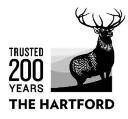
 By Allison Enright “
By Allison Enright “
Psst! Did you hear the news? Mike over in accounting gave his two-weeks notice ”
It’s a statement that anyone responsible for hiring or managing talent dreads It costs a lot of money about a third or more of the position’s annual salary to find, recruit and train a new employee, and that doesn’t account for the indirect costs, such as the added stress for remaining employees who have to cover the additional work
But with the economy beginning to stabilize, employers will be opening resignation letters much more often than they have in the last 24 months According to the Bureau of Labor Statistics, in fact, the number of “quits” in February exceeded the number of layoffs for the first time since 2008
W h y a r e m o r e p r o f e s s i o n a l s e y e i n g t h e d o o r ?
“When the financial crisis occurred, many people w e r e d o w n s i z e d i n a s h o r t p e r i o d o f t i m e . T h e employees who were retained were asked to work doubly as hard to fill the void Companies had a loss of foresight,” says Dale Pearson, director of Midwest operations at recruiting firm Michael Page International
“The number one reason that someone is open to leaving a role is not compensation,” says James F. Wong, founder of Clear Focus Financial Search, an accounting/finance executive search firm based in Chicago “If compensation is competitive relative to the marketplace and benefits are relatively close, you are not going to lose a person over that issue. However, you do tend to lose the employee because they don’t feel like they are being challenged or developed,” he says
That lack of commitment to employee development is going to cost those employers who assumed the recent rock-bottom employee attrition and turnover rates would linger The voluntary turnover rate for accounting professionals, in fact, hovered above 30 percent for much of the last decade; in 2008 that percentage plunged to 10 percent, according to AICPA data
People were fearful of losing their livelihoods during the last 18 to 24 months, and a lot were closed off to the new job opportunities available during that time, says Wong “Candidates’ focus was on doing a really good job so that they could keep their jobs, following the thinking that, ‘The devil I know is better than the devil I don’t know If I go somewhere else where I don’t have that much goodwill or reputation or relationships I stand to be the last one in, first one out.’”
With many employers forced to make deep and dramatic cuts, a lot failed to think long term about development and succession planning, and instead damaged the implicit social contract they had with employees “The term ‘you are lucky to have a job’ was thrown around,” says Jeffrey K Cordes, founder and managing partner of TalentRISE, an end-to-end talent management consultancy based in Chicago. “It was the worst possible kind of thing you could do as an employer ”

Join

Elaine Weiss, ICPAS President and CEO, and Sara Mikuta, Chair of the ICPAS Board of Directors, are traveling across the state to talk about the impact of current trends on the CPA profession including:
This a great opportunity to get out of the office and look at the big picture --- all while enjoying a free meal, networking with colleagues and earning 1 hour of CPE!
Rockford | Sept. 28, 2010 | C37132
11:30AM - Networking and Lunch
12:00PM - 1:00PM - Program and Q&A
Best Western Clock Tower Resort 7801 E. State Street, Rockford, IL
Peoria | Oct. 5, 2010 | C37133
11:30AM - Networking and Lunch
12:00PM - 1:00PM - Program and Q&A
Hotel Pere Marquette 501 Main Street, Peoria, IL
Bloomington-Normal | Oct. 6, 2010 | C37134
8:00AM - Networking and Breakfast
8:30AM - 9:30AM - Program and Q&A
Chateau Hotel and Conference Center 1601 Jumer Drive, Bloomington, IL
Champaign-Urbana | Nov. 3, 2010 | C37135
11:30AM - Networking and Lunch
12:00PM - 1:00PM - Program and Q&A
I Hotel and Conference Center 1900 South First Street, Champaign, IL
Springfield | Nov. 4, 2010 | C37136
8:00AM - Networking and Breakfast
8:30AM - 9:30AM - Program and Q&A
President Abraham Lincoln Hotel 701 E. Adams Street, Springfield, IL
Glenview | Jan. 19, 2011 | C37176
8:00AM - Networking and Breakfast
8:30AM - 9:30AM - Program and Q&A
Wyndham Glenview Suites 1400 N. Milwaukee Avenue, Glenview, IL
Oak Brook | Jan. 24, 2011 | C37177
8:00AM - Networking and Breakfast
8:30AM - 9:30AM - Program and Q&A
Help develop the future of the profession.
Register today and bring a young professional colleague with you!
FOR ALL PROGRAMS: CPE: 1 Credit Hour Cost: Free
The Hyatt Lodge at McDonald’s Campus 2815 Jorie Boulevard, Oak Brook, IL
Chicago | Jan. 31, 2011 | C37178
8:00AM - Networking and Breakfast
8:30AM - 9:30AM - Program and Q&A
The Crowne Plaza Chicago Metro 733 West Madison, Chicago, IL
TO REGISTER for this complimentary program in your area, call 800.993.0393.
Consequently, it is the highest-level talent and most valuable employees who are now warming to the idea of new opportunities. “That group is the most important from a retention standpoint, and those that were treated poorly are the first to leave,” Cordes explains. “They are taking the opportunity to say, ‘This is a great example of a group that I thought had a culture that would support me in good times and bad and I found out that it wasn’t.’ These are the people who are looking over their shoulders and saying, ‘I am confident in myself and my ability to perform, and I will find an organization that will appreciate that ’”
Wong is seeing and hearing the same at Clear Focus “We are starting to see candidates who want to talk more and more, who are starting to feel a little more confident They feel like it is time, that the economy is slowly getting better and that they need to get a m o v e o n b e c a u s e t h e y h a v e n ’t a p p r e c i a t e d w h e r e t h e y h a v e been in the last 12 to 24 months,” he explains.
This is not to say that all companies and talent managers did a lousy job during the recession Importantly, it’s those companies that followed best practices during the hardest economic times that are now positioned to take advantage of opportunities for new business growth and that don’t have to worry about staffing issues.
“The best practice companies did things to weather the storm during the recession and they may have had to reduce their workforce But they did so in a way that was more natural,” such as by offering early retirement packages, says Cordes. They also modified existing development programs to be operationally more efficient. Instead of paying for employees to travel to company training seminars, they took advantage of eLearning opportunities or advanced telecommuting options
“Organizations that succeeded the most were focused not on the expense line but on the revenue line and asked themselves how they could position themselves for the recession to end,” says Cordes.
The companies that are struggling now are the ones that “stopped talking about the future with their employees and as a result the high performers stopped seeing opportunities for growth in their own organizations,” Pearson explains.
“Those that did a good job managing through the times and knew how to work through the challenge and keep the staff motivated despite layoffs, they will have lower turnover because those employees feel appreciated and wanted and are willing to stay with them now that there is a change in the winds,” Wong asserts.
If you’re reading this and thinking “uh-oh,” don’t panic yet Our experts agree that ongoing and consistent communication is essential to assuring that staff members stay positive about their employment with your organization. Regardless of where staff morale is, employees, especially high-performing and ambitious ones, want to know there is a future for them with their employer You must be willing to invest the time to get to know your employees on a professional and personal level, says Wong.
“Employees want to know they are developing the right skills to get to the next level, and they want to know someone in their o
l p t h e m g e t t o t h e next level There are many managers that are not in tune with this idea. Get to know your people, get to know what motivates them, what their goals are and help them achieve them,” he explains
C o r d e s a g r e e s , a d d i n g t h a t , “ R e i n f o rc i n g c a r e e r p r o g r e s s i o n a n d e x e c u t i n g s u c c e s s i o n m a n a g e m e n t p l a n n i n g i s s o m e t h i n g progressive organizations use as a great retention tool. It ties to the career development of an employee so they can see a path to l e a d e r s h i p ” D o i n g s o k e e p s t h e m e n g a g e d a n d e x c i t e d a b o u t their role at your organization
A note of caution, however: You have to be willing to aggressively follow through on any promises you make. “I think there will be a lot of window dressing a lot of the right words about being committed to employees But if it is just window dressing it will damage your company reputation even more,” says Cordes
In addition to reinforcing your commitment to employee development in a demonstrable way, it’s also time to distribute some tokens of appreciation The obvious ones are monetary bonuses now that the business outlook is brighter, and reinstituting perks that were eliminated when management was in extreme cost-cutting mode. Such moves will help to exemplify the company’s renewed commitment to its employees
There are many ways to make a deal work and we have tried them all at one time or another. Our reservoir of experience will serve you well, whether you are an owner gettingwhat you deserve for your practice or a buyer seeking a new adventure. Accounting PracticeSales is always working for you. Call Trent Holmes

I f , h o w e v e r, y o u ’ r e o f t h e m i n d t h a t i t ’s e a s y t o h i r e g o o d employees when people leave, think again “Without a shadow of a doubt, it is 10 times more difficult to find the right people now. You have no idea what is in the marketplace and you’ll get 1,000 resumes instead of 100; organizations don’t have the people or tools to sort that kind of thing They may be hiring to backfill what they had before, but they are not top talent,” Cordes warns.
Wong adds that many misjudge who’s in the pool of the unemployed “In this environment, their expectations are such that they can get that perfect candidate because unemployment numbers are so high that they should be able to get them,” he says “It’s a
e r ’s think,” so your best investment may be in those employees who already have a proven track record with you
The Illinois CPA Society is currently seeking nominations to honor the work of exceptional CPAs. The Outstanding Leadership in Advancing Diversity Award is designed to recognize individuals who have made a marked contribution to diversity within the accounting profession.
The Emerging Leader Award will recognize young professionals who possess the qualities of the Outstanding Leadership in Advancing Diversity Award but have 4-6 years of full-time work experience.
Nominees can be employed in any area of accounting or finance; including public accounting, industry, not-for-profit, education, government or consulting.
Criteria considered for the ideal candidate include:
A CPA credential, but do not need to be a current member of the Illinois CPA Society
Diversity efforts with measurable results
Breadth of diversity and related activities

Level of impact on the accounting profession
Unique and creative contributions to the profession in advancing diversity
Channel through which candidate has advanced diversity outside of, or in addition to, their day-to-day job functions
For more information or to nominate a candidate, please visit www.icpas.org.
The deadline for nominations is Friday, November 26, 2010.

Creativity may not be the first skill to come to mind when you think of accounting and finance professionals, but it’s one that’s increasingly valued across industries today. In fact, in IBM’s 2010 research study of 1,500 global CEOs, 60 percent cited creativity as the most important leadership quality for success in business, outweighing integrity and global thinking
Management focus has centered on innovation in the past, but Mary Ellyn Vicksta, owner and chief innovation practitioner for Appleton, Wis.-based Vicksta Innovative Practices, has seen a shift in mindset recently “Leaders today are seeing that they can achieve innovation by making sure they have people with creative skills in their organizations,” she explains
More than a soft skill, the creative thought process is often referred to as “lateral thinking,” a term originated by Edward de Bono, a leading authority in the field. Basically, lateral thinking refers to a way of thinking that helps to move thoughts away from natural patterns, says Vicksta Or, as Mark Fox, CEO of Sly as a Fox, a provider of creative workshops based in Orlando, Fla , puts it, “Creative thinking is breaking mental patterns to think of something in a way you haven’t before ”
For organizations to unleash creativity, developing a creative roadmap that’s understood by everyone is crucial, Vicksta explains “It doesn’t have to be a rigid process, but you need to implement a way to get people to come together and collaborate,” she says
Managing the creative process is important to keep sessions productive and participants on track, says Fox. He suggests organizing teams of 8 to 12 people large enough to generate many ideas without being overwhelming and, ideally, at least one-third of those participants should be from outside the department, or preferably from outside the organization and industry
Once the initial foundation is in place, team-driven creative thinking can have powerful results in terms of finding solutions to organizational challenges and making and implementing sound decisions. Fox often asks teams to “peel the onion,” or dig deeper to uncover the
There are various tools and techniques out there designed to manage the creative process “Six Thinking Hats,” developed by Edward de Bono, is a commonly used framework for group discussion Described by Vicksta as “thinking modes that help organize group discussions and allow teams to view their situation from different thinking perspectives,” she feels this technique is a good fit for left-brained types, like accounting and finance professionals, since it provides a more holistic view
The modes, or hats, that a team moves through are:
White Hat: This is the information mode, where team members focus on available data and identify any gaps in information that may exist
Red Hat: In this mode the group looks at a problem or decision using intuition and emotion, and thinks about how others would react emotionally
Black Hat: The black hat mode requires looking at things in an evaluative way, identifying weak points or flaws, identifying hurdles or challenges, and determining why ideas and approaches might not work
Yellow Hat: This is the positive -thinking mode, encouraging the group to identify the benefits and value of an approach
Green Hat: Focusing on creativity, the green hat mode is the time to develop creative possibilities, alternatives, or new concepts with little criticism of the ideas presented
Blue Hat: Standing for process control, meeting facilitators enter blue hat mode to manage the thinking process
true nature of the problem that needs to be solved. Once identified, the next step is to generate ideas and lots of them

Too often, teams jump on the first idea thrown out there that sounds promising Instead, Fox advises groups to focus on generating 200 or 300 ideas in an hour. And although this might sound daunting, once a group gets started, says Fox, you’ll be surprised at just how many ideas come pouring out
Jonathan Vehar, president and co-founder of New and Improved, LLC, an organizational development firm in Evanston, Ill., says facilitation techniques can vary, but his firm uses a six-step creative problem-solving process where participants identify the goal of the initiative, understand the facts and data available (and find the questions that still need to be answered), name the specific problem to be solved, generate a large number of ideas, select and refine the best ideas and ultimately determine a plan of action
Defining the goal and deliverables upfront is perhaps the most critical element “If you don’t have a clear sense of the goal, then success becomes a fuzzy thing,” says Vehar.



Being open to new ideas is key. “New ideas are threatening,” says Vehar “They disrupt things But that’s how we make progress ”
He cites common “killer phrases” that too often stunt creativity, including, “that won’t work,” “legal won’t allow it,” “we don’t do things that way here.” He stresses that groups need to be aware of killer phrases and catch themselves when they start attacking an idea without exploring it To avoid this, Vehar ’s team relies heavily on four rules originally developed and published by Alex Osborn in his book, Appl i ed Imagi nati on. The rules are: Defer judgment; create a large number of ideas; encourage wild and crazy ideas; and combine and build on other ideas
Vicksta points out that collaboration is vital “It’s important that p e o p l e u n d e r s t a n d h o w o t h e r t e a m m e m b e r s t h i n k a n d c a n appreciate, respect and build upon others’ ideas,” she says. “For example, not every CPA thinks exactly the same way Use the diversity of the team ”
Doing so may very well uncover tangible benefits Vehar for one has seen examples of sales increases, decreases in waste, new promotional concepts, names for new businesses, strategic plans for launching businesses, and more, all as a direct result of team-driven creative thinking
“Well designed creativity programs can have enormous results for innovation and growth,” he says. “As things change, we need to pay attention and explore possibilities ”
Maintaining focus on creativity especially in the face of the many demands on organizations today requires continual reinforcement from top management. Employees need to know that managers value and reward creativity.
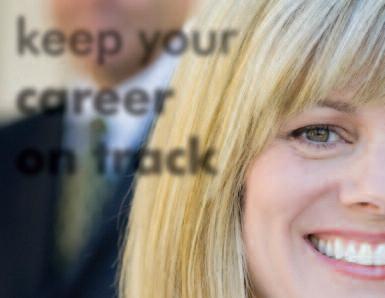

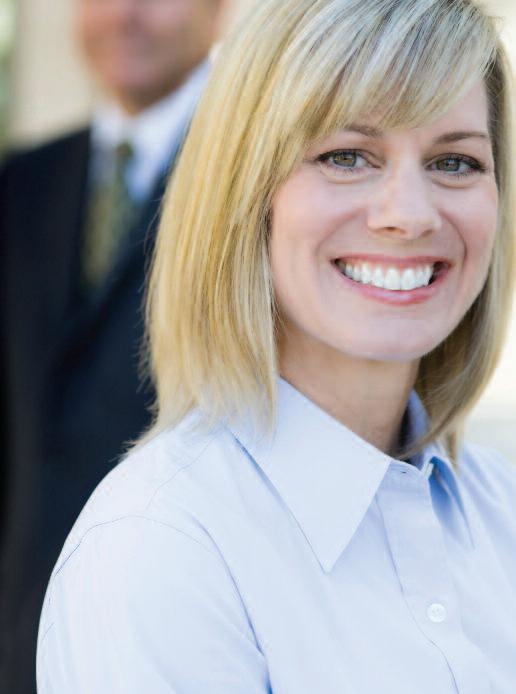
“Management needs to hold up the success stories and compliment groups that have used creative processes,” says Vicksta She suggests providing periodic refreshers, such as highlighting creative efforts at an annual meeting or finding other opportunities to keep the creative process going “Creativity is a skill that constantly needs to be enhanced,” she says
Designating a team to look after the creative-thinking process also can be helpful. “Have a group of people dedicated to making sure creativity stays alive and vibrant in the organization,” says Vicksta “Help people maintain that sense of wonder and discovery that’s part of the process ”

Fi r m s b o t h l a rg e a n d s m a l l a r e m a k i n g s u s t a i n a b i l i t y a k e y initiative Some, such as Deloitte LLP, are helping clients measure their impact on the environment using methodologies similar to traditional financial reporting Others, such as Kutchins Robbins & Diamond, h a v e i n c o r p o r a t e d s u s t a i n a b l e p r a c t i c e s a n d p o l i c i e s i n t o their own day-to-day operations Whatever the approach, we are most certainly undergoing a greening of the accounting profession

First, a look at what large firms are doing In August 2009, Deloitte launched the Center for Sustainability Performance with the goal of providing onsite client training, researching sustainability metrics a n d d e v e l o p i n g r e p o r t i n g b e s t p r a c t i c e s . “ S u s t a i n a b i l i t y m a n a g ement is like any other field of management if you can’t measure it, y o u c a n ’t m a n a g e i t , ’ ” s a y s M a r k W. M c E l r o y, P h . D . , d i r e c t o r o f research for the Center M c E l r o y e x p l a i n s t h a t s u s t a i n a b i l i t y m a n a g e m e n t a s a f o r m a l discipline is in its formative stages, meaning that there are no established metrics or standardized reporting methodologies, only several competing ones. Yet, as public demand for corporate transparency grows stronger, there’s increasing pressure for companies to account for their social and environmental impacts.
“We’re going to see a much higher percentage, if not a majority, of public companies producing sustainability reports every year in line with their financial reports,” he says
He also foresees a convergence of financial and non-financial reporting “If you’re a shareholder, or a stakeholder of any kind, you want to have an understanding of the company’s total performance, and not just one part of its performance,” he explains “To the extent that social and environmental impact is becoming more and more material, we are simply at a point where non-financial performance has become just as important as financial performance ”
McElroy feels that the current approach to sustainability performance is somewhat lacking “I would liken today’s mainstream practices for measuring sustainability performance as equivalent to producing an income statement without including costs,” he says Most companies today, he adds, are reporting performance without providing context For example, companies are reporti
Or, they’re reporting greenhouse gas emissions without taking atmospheric limitations into account. “How can we possibly draw any meaningful conclusions about sustainability performance if we’re not taking the equivalent of social or environmental costs into account?” he asks
McElroy prefers the concept of context-based reporting, which involves measuring a company’s impact relative to its surrounding environment “For example, if we are going to measure how much water a manufacturing plant is using, there are two ways to do that First, you could just measure quantity, which is what most organizations do. Or you could report that quantity against a separate measure of locally available supplies,” he explains “When you’re trying to understand the sustainability of a manufacturer ’s water usage, it absolutely matters what the status of the background supply is.”
Cabot Creamery Cooperative is a Vermont-based family owned dairy farm and cheese-maker that partnered with McElroy and the Center for Sustainability Performance to develop its own sustainability strategy Jed Davis, Cabot’s director of sustainability, explains that the company’s concept of sustainability is “living within our means and ensuring the means to live ” Cabot’s fundamental approach to stewardship and social impact is based on the triple bottom line of social, environmental and economic factors
“As we began to hear a real interest from key stakeholders especially consumers and customers in Cabot’s sustainability program, we realized that formulating a sustainability strategy needed to be, itself, strategic,” says Davis

Ninety-three percent of corporate CEOs say that sustainability will be critical to the future success of their companies, according to the key findings of A New Era of Sustainability: UN Global Compact-Accenture CEO Study 2010, a survey of 766 CEOs from around the globe conducted by Accenture [accenture com] and the United Nations Global Compact [unglobalcompact.org]. Over the next decade, CEOs believe that a tipping point could be reached that fully meshes sustainability with core business its capabilities, processes and systems, and throughout global supply chains and subsidiaries According to the survey, the global economic downturn did little to dampen corporate commitment to sustainability In fact, 80 percent of CEOs say the downturn has raised the importance of sustainability As businesses address the challenges of the financial crisis, sustainability is being recognized as a source of cost efficiencies and revenue growth Additionally, many companies view sustainability as a critical element in driving growth in new markets as they look toward economic recovery
And so Cabot turned to the Center for Sustainability Performance for guidance in managing non-financial and financial metrics together
“The changes have been both philosophical and practical,” he explains “Embracing context-based sustainability metrics as a more genuine methodology for evaluating impacts has been central to our thinking ”
To d a y, C a b o t c o n s i d e r s t h e w e l l - b e i n g o f i t s s t a k e h o l d e r s when setting sustainability goals and priorities “Now we command a better grasp, not just on what sustainability is or isn’t, but on how to incorporate it in our operations. We recognize that sustainability is a unique lens through which we can monitor a n d i m p r o v e o u r o w n p e r f o r m a n c e , ” D a v i s e x p l a i n s “ We approach sustainability as evolutionary not revolutionary, and celebrate both the process and progress as key.”
CPA firms, too, are going the green route by incorporating environmentally friendly practices into their offices One example is Kutchins Robbins & Diamond in Schaumburg, Ill , which in May 2010 became the first accounting firm in America to receive the Certified Green Business seal The Green Business League
awarded the firm silver status in recognition of its commitment to both social and corporate responsibility The certification, unlike LEED, can be earned by businesses that do not own their buildings.
Kaye Kharasch is the founder of Green Building Connections, the consultancy that helped Kutchins Robbins & Diamond attain its silver status Green Building Connections looks at every aspect of an organization’s functions, and works to reduce the amount of energy and natural resources consumed.
“Kutchins Robbins & Diamond is a very interesting and progressive firm It has made a substantial commitment to going green and as such is a leader in its industry,” says Kharasch.
The Green Business League is a point-based, third-party audited certification, and as such gives transparency and validation to any organization’s green practices In order to qualify, an organization must achieve a minimum of 100 points. Kutchins Robbins & Diamond is well above that marker.
Among the firm’s green initiatives is utilizing programmable thermostats and CFL bulbs, which help to manage gas and electricity consumption The firm also participates in community recycling programs. “They do an excellent job with paper, cardboard, plastic, ink cartridges and old computer equipment There are bins n e x t t o a l l o f t h e d e s k s a n d r e c e p t a c l e s l o c a t e d i n c o n v e n i e n t areas,” says Kharasch
A l l e n K u t c h i n s , t h e f i r m ’s c o - f o u n d e r, s a y s t h e d e c i s i o n t o become an environmentally forward-thinking firm evolved over the past several years “We initially moved our work to the internet about five years ago With the positive response of existing and new clients, we started exploring additional actions. We see going paperless as a natural extension of our online processing,” he says “Getting certified as a green company evolved from what we had already done ”
Still, the process of certification brought to light other areas in which the firm could lessen its negative impact on the environment “While we received our certification on what we did as a f i r m , w e m a d e a s i g n i f i c a n t i m p a c t o n t h e c o n s c i o u s n e s s a n d actions of the people at our firm as well as our clients. We have seen changes,” says Kutchins.
A l t h o u g h t h e f i r m h a s n ’t f o r m a l l y q u a n t i f i e d t h e r e t u r n o n i n v e s t m e n t f r o m g o i n g g r e e n , K u t c h i n s s a y s t h a t b u s i n e s s h a s grown significantly over the past five years, which he attributes at least in part to the firm’s green initiatives. “We have received additional referrals from existing clients during that same time period Maybe they have found our efforts reinforcing of the trust they have placed in us,” says Kutchins
On the other side of the country, another accountant has taken his five-person firm’s internal operations 100-percent paperless San Francisco-based David Kupferman, CPA wanted the ability to pick up and work remotely at any given time So he made the decision to eliminate paper. “The CPA practice is traditionally paperheavy Paper-bound, I would say,” Kupferman explains
Every document that now passes through Kupferman’s office is scanned into the firm’s virtual database, thereby eliminating duplicate copies and printouts. To get to this point, the first step was to map out workflow “This is an essential undertaking because it
provides deeper insight and understanding of existing processes,” says Kupferman.
Second, he researched product solutions to find the ones best suited to his purpose “Don’t buy into the vaporware and salesman spiels out there You really have to test the waters Talk to people who are using products, and if you can, do a dry run before you make the leap,” he encourages
Kupferman notes that some firms take a step-by-step approach to going paperless This was not for him “I decided to go cold turkey. Totally paperless. This requires partner buy-in, and people who will follow it with religious zealotry, to make it work,” he admits “Not only did we put the entire current tax season in our v i r t u a l s p a c e , w e s c a n n e d e v e r y t h i n g i n We w e n t b a c k s e v e n years and shredded a ton of paper. Now all the file cabinets are essentially gone with the exception of one Now, when printing any paper, I feel guilty ”
Kupferman does still print out client tax returns, believing this to be an important part of a service-oriented firm. “I believe there is deep value in printing out a return, having it in a beautifully embossed binder ready for the client It’s just like the doorknob of your office It should look nice It’s the first thing they touch,” he explains.
Internally, however, Kupferman took existing paper trails and processes and virtualized them “In the old days, you would have routing sheets and sticky papers And these would go in different drawers or on someone else’s desk. A new document would come in, and you’d do something else with it I mimic that entire process online,” he says
e m p l o y e e i s s e t u p w i t h m u l t i p l e s c r e e n s , t w o l a rg e widescreens, and two tall 27” screens. This enables them to view several documents simultaneously “This is very, very important, because when you are looking at tax returns, or 8 5”x11” documents on a normal screen, they’re very small and you’re squinting,” says Kupferman.
Since the cost of monitors has decreased tremendously over the past few years, Kupferman says it’s worth the investment “On my desk I have a wall of 32” wide screens. When I’m reviewing this year ’s return, last year ’s return, a document from the client and some other documents, it makes everything a lot easier The more screens, the merrier,” Kupferman quips “You won’t have to scroll your document, you’ll see the whole thing in front of you. I reco m m e n d t h a t C PA s g e t m o r e R A M , g e t b i g , g e t w i d e a n d t a l l screens You’ll be amazed ”
Kupferman estimates that he was able to increase workflow efficiency by about 30 percent by going paperless. “You’re able to find things infinitely faster, and you are less likely to lose things It will force you to be organized and more efficient, and ultimately, if you play your cards right, it will allow CPAs to greatly expand the potential for staffing,” he says.
Kutchins for one hopes that his firm’s actions will inspire other accounting firms to choose greener options “As accountants, we hold the title of the most trusted advisors We share the opportunity to inspire others,” he says. “Sometimes you just need to do the right thing ”



 By Derrick Lilly
By Derrick Lilly
Financial reporting may be a monthly routine or a quarterly requirement, but it’s also one of your best strategic planning tools In fact, with the right metrics in place, financial reporting is your key to better business decisions and long-term value creation
“Most non-financial users of financial statements look at them and think, ‘Okay, if revenues are greater than costs and expenses then all is well ’ And, if it happens to be more than last year, they think they’re doing really well, but we need to shatter that myth,” says Marian Powers, Ph D , Kellogg School of Management’s Allen Center for Executive Education at Northwestern University in Evanston, Ill , an instructor for the Illinois CPA Society’s Center for Corporate Financial Leadership, and a director of the CPA Endowment Fund of Illinois “A common misunderstanding is that earnings are all that’s important because the marketplace puts an emphasis on it But whether or not current earnings are more than last year does not determine whether or not your organization created value.”
While earnings-per-share, net income, and price-to-earnings ratios are popular measures, on their own they reflect little in terms of value creation
So what measure matters?
It takes more than creating value to lead with the best you have to sustain it for the long haul.
Truthfully, no single metric will fit all situations. What really drives value creation are fundamentals. You need to compile and analyze multiple metrics to gain the best understanding of whether your organization’s fundamentals are creating shareholder or company value.
Powers offers financial metrics that are linked to value creation and on which high-performance companies excel. They are derived from several in-depth studies that analyzed the financial performance of thousands of global companies These organizations provided insights into not only key metrics, but also the strategies used by the highest performers and the most sustainable value creators
“There are six key numbers and four key ratios to observe If a company focuses on these, you can tell at a high level whether the firm is moving successfully towards value creation,” she explains
The key numbers are revenue, net income, cash flows from operations, total assets, total liabilities and total equity And the key ratios are asset turnover (assets/revenue), profit margin (net income/revenue), cash-flow yield (cash flow from operations/net income) and debt-to-equity ratio (total liabilities/total equities).
“High-performance companies consistently do well on these numbers; if a company is not performing well on these ratios then a deeper dive into the six key numbers is warranted,” says Powers. “When you examine the items that contribute to these figures, you can identify the changes and strategies warranted as a result of the performance ” Although, she adds, “It’s not just the accountant that needs to understand these numbers; the entire leadership team needs to understand how these ratios and the underlying amounts link to value creation, and evaluate them in the context of the organization’s goals ”
With the right data in hand, Powers suggests that organizations create internal performance benchmarks, “regardless of whether they’re a for-profit or not-for-profit, public or private, with global, national or local operations ”
To identify your ratio benchmarks follow these three steps:
1. Look back at historical figures over a time period that includes the best and worst years and chart out performance over this time to reveal performance ranges and trends.
2. Where possible, find comparable measures within your specific industry to understand how your performance stacks up against industry peers
3 Look forward and set performance targets for a one- to threeor one- to five-year timeframe based on your analysis of steps 1 and 2
With benchmarks in place, you’re off to a solid start for identifying value creation opportunities However, while we know the performance measures on which high-performance companies excel, this knowledge doesn’t give the whole picture
“Performance measures provide the steering, guiding an organization to execute the strategies and plans it has established The goal of every business should be to achieve superior long-term return on investment. Without this goal as a primary anchor for performance measures, companies lack the discipline that will help them make good decisions,” says Mark L. Frigo, Ph.D./CPA/ CMA, director of the Center for Strategy, Execution and Valuation,
So where do you start? According to Frigo, organizations need to accept that their existing performance measures may have flaws, and that there may not be a quick fix
Powers adds that, “Finance leaders need to reexamine their financial statements and determine what kind of information is provided to decision-makers, and if best practices to communicate financial information across the organization are being followed.
“If users don’t understand it, they won’t use it or worse yet it will be used incorrectly,” she continues. “CFOs and controllers need to consider, ‘What are the best practices for presentation of financial information for decision-making?’ and, ‘How do we bring greater clarity and reduce the confusion about what the numbers mean?’ Also, ‘What are some things we can do in the way we deliver and communicate the information?’”
Next, Frigo emphasizes that from the top down management must focus on value creation and strive to motivate and guide its organization’s activities towards that focus
“CFOs can provide a strategic perspective on the financial performance measures One of the strengths of high-performance CFOs is their ability to connect the strategy of the organization with the financial reports, and articulate how the organization intends to create shareholder value They also need to be able to articulate how the organization intends to protect shareholder value (enterprise risk management),” he says.
“Finance leaders need to be strategic financial advisors who understand and make the case for value creation as a strategic goal for their organizations,” adds Powers. “They can help the users of the information understand what the strategies are, and help management and staff focus their attention on the right things ”
Defining what’s right for an organization is influenced by matters of internal culture, goals, performance measures and, most importantly, management But Frigo offers some universal advice: “Commit to ethically maximize financial value Companies that abide by this rule show better financial results over long-term periods Those that don’t live by this guiding principle are some of the worst financial performers ever ”
The difference between high performers, the mediocre and the worst performers often comes down to, “Doing the right things (ethical business conduct) for the right reasons (driving superior and sustainable return on investment),” which is why after extensive research into the activities of thousands of high-performance companies, it’s a leading aspect of the Return Driven Strategy™ framework developed by Frigo and Joel Litman, and described in their book, DRIV EN: Busi ness Strategy, Human Acti ons and the Creati on of W eal th. The framework was developed to describe the pattern of strategic activities that have been proven to lead to superior and sustainable high performance. It helps organizations to focus on the activities that will produce superior return on investment, while limiting the risk of shareholder or company value destruction
When organizations are creating their strategies for sustainable and ethical value creation, Frigo emphasizes the need to follow these five critical factors:
1. Commitment to ethically create shareholder value
Conduct business within the ethical parameters of your constituents and communities, and commit to creating shareholder value by focusing on achieving superior long-term return on invested capital
2. Target and fulfill otherwise unmet customer needs
This avoids commoditization and drives superior returns by providing high value for customers Mediocre companies tend to lose focus on their customer needs and are unable to align their offerings with the changing needs of customers
3. Target and dominate the right customer groups
Target customers with similar needs where the company has distinct competitive advantage, and become the dominant p r o v i d e r o f t h o s e n e e d s A s P e t e r D r u c k e r, t h e “ F a t h e r o f Modern Management,” said to former GE CEO and Chairm a n J a c k We l c h , “ B e n u m b e r o n e o r n u m b e r t w o i n t h e industry or get out.”
4 Innovate your offerings to better fulfill customer needs
Innovation risk is the biggest risk faced by companies today and will stifle their ability to rebound from the recession Innovation risk is the inability to change your offerings to better fulfill changing customer needs before your competitors do.
5

Stop counting and start measuring Performance measures must be highly aligned with the tenets and foundations of the Return Driven Strategy framework. In today’s business environment, performance measures should also include key risk indicators for effective strategic risk management
Lastly, Powers urges organizations to be mindful of their weighted average cost of capital “Many companies are not earning a return above their cost of capital (COC),” she says. Often, the focus o
high-performance organizations stay focused on the finish line, “which is achieving a satisfactory cash return on their invested capital (ROIC) ”
Frigo offers two simple benchmarks for this: Is your return on invested capital greater than your cost of capital ? (Is the spread between ROIC and COC increasing, stable or declining?) And, is growth accompanied by maintaining the ROIC-COC spread?
If turning your company into a high performer with clear goals for sustainable value creation is your mission, there’s never been a better time to start “All companies should do a strategy audit in 2010 to assess how well their business strategy is aligned with sustainable shareholder or company value creation,” Frigo advises “Following the financial crisis, most business strategies have become obsolete; they need to be reset.”
If making better business decisions, driving value creation and gaining higher retur ns are top of mind, these upcoming executive education courses led by educators Mark L Frigo, Ph D /CPA/ CMA and Marian Powers, Ph D and offered through the Illinois CPA Society’s Center for Corporate Financial Leadership can shed light on the strategies you’ll need
Developing and Executing Strategies for Growth & Profitability: The Return Driven Strateg y™ Framework
Led by Mark L Frigo, Ph D /CPA/CMA, “Retur n Driven Strateg y p r ov i
n e s s strateg y aimed at achieving maximum long-ter m wealth creation for your company ”
Led by Marian Powers, Ph D , this course will help you “Discover how you can enhance your role as a strategic business par tner to help your company drive better business decisions through effective design, analysis and communication of financial statements ”
Led by Mark L Frigo, Ph D /CPA/CMA, “This course will help you to design and use a Balanced Scorecard and Strateg y Maps to align performance measures and targets to drive superior performance ”
For more information and for schedules, visit ccflinfo org.


There’s friction between the United States and China, but most aren’t calling it a ‘war ’...at least not yet.
“The fear of a trade war is greatly exaggerated. There are major tensions with China, but all the trade disagreements so far have been handled through existing agreements with the World Trade Organization (WTO),” says Dan Griswold, director for the Center for Trade Policy Studies at the Cato Institute in Washington, DC “This is all normal business with global trading.”
been in a trade war with China for decades,” states Roger Simmermaker, author of How Ameri cans Can Buy Ameri can. “The only thing that has changed is that the United States is just now beginning to stand up for herself in the name of fairness and the interests of balanced trade, which can only have the effect of stabilizing the American economy and indeed the broader economy ”
Much of the friction is about tires Between 2004 and 2008, China’s tire production capacity surged more than 150 percent and is projected to jump an additional 16 percent by year end. At 235.2 million tires, China’s production capacity in 2008 was more than three times greater than its shipments to its home market. US tire imports from 2004 to 2008 jumped from 14 6 million to 45 million China’s share of the US tire market surged 255 percent in that time, from 4 7 percent to 16.7 percent. Meanwhile, four US tire plants closed in 2006 and 2007, and the number of tire industry workers dropped by more than 5,000 between 2004 and 2008.
Late last year, the United States implemented tariffs on Chinese tires under Section 421 of US trade law, which was agreed to by China when US-China trade relations were normalized and China joined the WTO Until 2013, Section 421 allows the United States to tariff Chinese goods simply by showing that there has been a surge in Chinese imports, with damaging effects for US domestic producers To put tariffs in place, the US International Trade Commission makes an assessment of the import surge and provides the President with a recommendation of whether and how large a tariff should be instituted. The President then determines what tariff to apply.
In the first year, the Obama Administration put steep import duties of 35 percent on Chinese passenger and light trucks. China strongly opposed what it called “a serious act of trade protectionism ” The tariffs decline to 30 percent in the second year and 25 percent in the third. During the furor, reportedly, a poll on a state-run television news site found that 90 percent of Chinese citizens believed that China could go toe-to-toe with the United States in a trade war.
Rampant enforcement of Section 421 is sensitive When Section 421 is invoked, there is little China can do to appeal or counter the action. Subsequently, some say that every time Section 421 is used it will engender fiery retaliation Furthermore, trade tensions theoretically could spill over into areas that have nothing to do with trade For that reason, some feel that Section 421 could lead to a trade war, if the United States repeatedly uses it and China responds through escalation.
“The tire tariff got a lot of publicity and it made the Chinese mad,” says Ed Gresser, trade policy director with the Democratic Leadership Council in Washington, DC There are, however, three reasons for trade remedy laws One, to safeguard against an increase in imports and to allow affected business time to recover. Two, to offset unfair pricing (anti-dumping) And three, to counter duties and offset foreign subsidies.
“Trade with China has displaced or eliminated 2 4 million American jobs since China joined the WTO in 2001 It’s difficult to understand how any moves to place sensible tariffs upon Chinese imports
to at least attain a balance of trade can result in anyone perceiving the United States as ‘protectionist,’” says Simmermaker, “That’s really where the rubber meets the road on this tire case, because it’s more about the impact on US jobs and US Treasury tax revenue than anything else; that will determine if these tariffs on Chinese tires are good or bad for the economy,” he explains
Simmermaker crunches the numbers, starting with the 5,000 jobs lost. Say an American tire-maker brings home $50,000 a year in wages Using a conservative 25-percent tax rate, that represents $12,500 lost tax revenue per laid-off worker for the US Treasury Multiply $12,500 by 5,000 workers, and that equals $62.5 million total lost tax revenue
And what does the United States stand to gain from the tire tariffs? Simmermaker calculates his estimates based on 14.6 million imported Chinese tires (this assumes the tariffs will beat back the 2008 figure of 45 million) Say an imported tire is $50, using the 35-percent tariff, the US would collect $17.50 per tire. Multiply that by 14 6 million tires and there’s $255 5 million in tax revenue for Uncle Sam
“That’s just one tariff for one year, in one industry. That revenue would have paid for many worthy programs with money left over to boot There are many other American industries that are currently being clobbered by the Chinese in the name of free trade for which tariffs could be applied to further get our fiscal house in order,” says Simmermaker
In 2009, imports fell sharply by $600 billion, from total imports of $2 5 trillion in 2008 Exports fell by $270 billion, says Gresser In 2010, imports are up 15 percent and exports by 17 percent “With the recovery, trade is bouncing back. Trade is helping to lead the recovery,” he says
Enforcing trade laws is key to maintaining an open and free trading system. “We are working hard to resolve disputes and imbalances through direct negotiation when we can, and at the WTO when we must All of Asia, including China, is a dynamic region where the United States wants to build partnerships and do business,” says Nkenge Harmon, deputy assistant US Trade Representative for Public and Media Affairs with the Office of the United States Trade Representative, Executive Office of the President “A strong trade policy is key to our economic recovery. A healthy economy requires a strong trade policy, public and private investment, and reasonable growth in global consumer demand ”
m i
growth in recent quarters In fact, says Harmon, the recent increase in US exports accounts for more than 40 percent of the economy’s overall expansion over the past nine months. “That demonstrates that a strong US trade policy will help to lay the foundation for a steady and lasting economic recovery,” he says
According to Gary Hufbauer, the Reginald Jones Senior Fellow with the Peterson Institute for International Economics in Washington, DC, China has made it more difficult for US firms to sell goods and services to Chinese provinces by means of its “indigenous innovation strategy” and the requirement that US firms team up with Chinese firms before their bids will be considered.
Chris Tregillis, a managing director in LECG’s Los Angeles, specializing in damages, intellectual property and forensic account-
ing, explains how this works. “The program defines the sourcing of purchases by the Chinese government, with products employing Chinese patents or trademarks enjoying significantly preferential treatment So a network router from a Chinese company gets s u b s t a n t i a l f a v o r i t i s m c o m p a r e d t o a c o m p e t i t i v e p r o d u c t f r o m 3Com The policy cuts off access to the Chinese market for American companies. When the US tech companies got up in arms about this, the policy was altered, but American companies still hold serious concerns, because there is still favoritism for Chinese companies,” says Tregillis “How this all plays out remains to be seen After earlier assurances that the Chinese would have fair p o l i c i e s , i n d i g e n o u s i n n o v a t i o n w e n t d i r e c t l y c o u n t e r t o t h e s e assurances, and now the pendulum is swinging back. It isn't going to be solved overnight.”
Then too, Hufbauer contends, China continues to delay a program to appreciate the RMR against the dollar, most recently citing Euroland problems as the reason “At some point, these grievances may reach the level of tit-for-tat trade and investment retaliation, but we are not there yet,” he says
“The most significant trade problem facing the world economy today is currency manipulation by China and a few other Asian economies (Hong Kong, Taiwan, Malaysia, Singapore, and to a lesser extent, Japan),” says Robert E. Scott, senior international economist and director of international programs at the Economic Policy Institute in Washington, DC. “If these countries agree to r e v a l u e , i t w i l l g r e a t l y r e d u c e t r a d e f r i c t i o n s a n d e n h a n c e t h e g r o w t h o f w o r l d t r a d e , w h i l e r e d u c i n g d e s t a b i l i z i n g c u r r e n t account trade imbalances.”
Therefore, if the United States threatens to impose or actually does impose tariffs on China and other currency manipulators, it is likely to quickly lead to a reduction in global trade tensions.
“These countries are too dependent on exports to the United States and will be forced to revalue in a very short time, as happened with the EU and Japan following Nixon’s import surcharge in 1971,” says Scott
In May, the US-China Strategic and Economic Dialogue (S&ED) meeting helped to move the ball forward on economic and commercial issues that impact American companies doing business with China

“The S&ED is not meant to solve every issue between our countries, but these meetings are a vital part of the ongoing process of resolving issues that matter to American companies,” US-China Business Council President John Frisbie said in a prepared statement Top on the agenda was China’s innovation policies “We are pleased that the Chinese government recognizes that recent innovation incentive policies require further discussion and has committed to continued dialogue in this issue, instead of moving forward with their plan,” said Frisbie “We want these discussions to convene as soon as possible and will use them to urge China to follow international best practices and employ non-discriminatory
Nkege Hamonmeans to foster innovation ” China pledged to submit a revised offer to join the World Trade Organization Government Procurement Agreement in July.
C h i n a ’s c u r r e n c y p o l i c i e s w e r e d i s c u s s e d , b u t n o t f e a t u r e d prominently. “We nonetheless welcome President Hu Jintao’s affirmation to reform his country’s exchange rate administration and China’s desire for increased coordination in rebalancing economic growth models,” said Frisbie “With the Greek debt and euro pressures hampering global economic recovery, it is essential that the United States and China work together with other G-20 nations to develop coordinated financial policies ”
Such talks can only be a good thing, a quieting of a fire that’s sparking But Scott remains sure that, “The odds of a real trade war with China are vanishingly small because the United States holds all the key cards in this game. US imports from China exceed US exports by more than 5-to-1. So if China were to attempt to restrict or tax imports of US goods, it would only be shooting itself in the foot ”
“We are working hard to resolve disputes and imbalances... All of Asia, including China, is a dynamic region where the United States wants to build partnerships and do business.”
WeareKUTCHINS,ROBBINS &DIAMOND,LTD.,agrowing
SchaumburgIllinoisfullservice CPAfirm.Comemeetwithusto hearfirst-handabouthowweare
Different, Newand Attractive–our DNA
Different
Handsonresponsibility/Consistent firmgrowth/No“killerhours”
New
Entrepreneurialspirit/ Highlycomputerized/internetbased software (state-of-the-artequipment) / Charitableinvolvementatbothfirm andindividuallevels
A ttractive
Friendlyworkenvironmentwithgood workspace/Fullystockedkitchen yeararound/Greatbenefitsand compensationpackage
Wehaveopeningsinouraudit andtaxdepartmentsforthe rightprofessionalswithtwo ormoreyearsofexperience.
Contact: AlKutchins,CPA
847-240-1040x135
akutchins@krdcpas.com
How
Practical
Small CPA firm with many high earning clients located in Buffalo Grove looking to bring in a Junior CPA for future partnership My goal is to possibly retire in approximately 10 years Please respond only if you have an established client base. bonnie@fischmancpa.com
By: Crandall & Brackett, Ltd.
(630) 653.7922
email: robert@crandall-brackett.com

Web: www crandall-brackett com
Our only service is performed on your behalf in a mutual engagement setting. From basic research to a full valuation, we tailor our services to your needs We author, teach and participate on policy setting committees and boards within the valuation profession
ILLINOIS PRACTICES FOR SALE: Northern Illinois CPA practice gross $204K; Chicago-SW Suburbs, gross $610K; Davenport, IA Tax & Bookkeeping practice gross $270; Effingham Area CPA Practice gross $366K; Rural North Central IL CPA Practice gross $402K For details, call1-800-397-0249 or visit us at www.accountingpracticesales.com to inquire about available opportunities and register for free email updates
Accounting Practice Sales is the leading marketer of accounting and tax practices in North America We have a large pool of buyers, both individuals and firms, looking for practices now We also have the experience to help you find the right fit for your firm, negotiate the best price and terms and get the deal done To learn about our risk-free and confidential services, call Trent Holmes at 1-800-397-0249 or email trent@accountingpracticesales.com
IRS Collection
September 16 –Chicago, IL
Financial Institutions
September 23 –Lisle, IL







Midwest Financial Reporting Symposium





September 24 –Rosemont, IL
Family Law
October 25 –Chicago, IL
Construction Industries
October 26 –Oakbrook Terrace, IL
Healthcare Compliance & Fraud Half-Day

October 28 –Rosemont, IL
IRS/Tax Practitioner Symposium
October 28 –Rosemont, IL
Tax
November 9 –Rosemont, IL
Fraud
November 11 –Chicago, IL
Not-for-Profit Half-Day

November 16 –Rosemont, IL
Not-for-Profit
November 17 –Rosemont, IL
Employee Benefits Half-Day

December TBA –Rosemont, IL
December TBA - Springfield, IL
Not-for-Profit
December 8 –Springfield, IL
Accounting & Auditing
December 15 –Rosemont, IL
December 16 - Springfield, IL
For the most current information or to register, visit www.icpas.org. Dates and locations are subject to change. All conferences offer CPE Credit; check our website regarding CLE and other specialty credits.

From January to April 2010, ICPAS members assisted Chicago area high school students as they navigated complicated college financial aid paperwork at workshops offered through the LadderUp organization Federal Financial Aid (FAFSA) is essential for thousands of college hopefuls, and assistance with the challenging paperwork can help to make college dreams a reality
Thank you to our 2010 volunteers:
Thomas Akompong
Ronald Axe
Carolyn Chin
Julia Peggy Cochrane
Cindy Darling
Lisa Donofrio
Michaelene Edgeworth
Collin Gardiner
Carri Goodman
Dianne Goren Radtke
Cameron Gunderson
Jonathan Hauser
William Heavener
Jennifer Jang
Carron Johnson
Rhonda Kodjayan
Richard Kresse
Sarah Kuhn
Michael Mayo
Matthew McClelland
Matthew McGrath
This spring, Illinois CPA Society members volunteered to present money management skills to elementary school children in schools in Bartlett, Chicago, Morton Grove, Wheaton and Wheeling

Thank you to our spring JA volunteers:
Tina Bloom
Robert Cahill
Mary Geoghegan
Gabriel Gutierrez
Mary Heatter
Da'Nita Husband
Sue Katano
Amy Langfelder
Robert Lawrence
Michael Leszczewicz
Rob Mason
Sarah McKevitt
Kristina Morales
Jacob Mrugacz
Somya Munjal
Tom O'Neill
Jay Oprins
Jo Shariff
Diane Sotiros
Monika Sukowski
Kadir Sunardio
Karen Todd
Martin Wojtulewicz
Beginning in September, fall Junior Achievement volunteer opportunities will be offered in communities in the Chicagoland area, as well as Central Illinois and areas in Southern and Western Illinois.
Please note: We have done our best to compile a full list of volunteer names Our sincerest apologies if we missed anyone
Mark Mitchell
Beth Mueller
Robert Nelson
Timothy Okrie
Jim Patterson
Toi Robertson
Carlos Sanchez
Brett Schaibley
Daisy Schmookler
Payal Shah
Debbie Smith
Ellen Stutz
Muthuswamy Sunder Marites Sy
Melanie Villanueva
Lawrence Walther
Joann Weller
Claudia Wolf
Mark Wolfgram
Christina Yotz
Mary Zellers
College Financial Aid Application Assistance volunteer training begins in December, and will take place in the Chicago area as well as in communities in Central Illinois














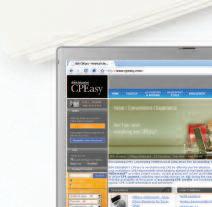



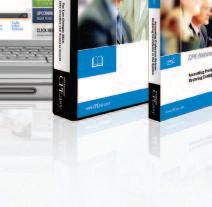
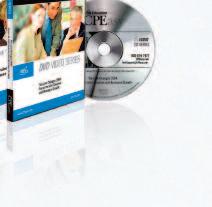




It’s
You may already know Paychex is one of the largest payroll and human resource companies in the U.S., servicing over 550,000 businesses nationwide. But that’s just the beginning. Paychex is also one of the industry’s largest 401(k) recordkeepers, and offers a full complement of HR-related services. Paychex can provide your clients a wide range of integrated payroll and HR offerings, allowing you to broaden the client services you provide, while enhancing your status as a valued and trusted advisor.
The Paychex Partner Program from AICPA Business Solutions is a valuable resource in this challenging economic environment. Paychex will ensure that your firm and clients are staying up to date with ever-changing legislation–including the new tax incentives and COBRA premium subsidy programs. Learn why over 20,000 CPA firms rely on the Paychex Partner Program to continually keep their firms and clients in compliance with all the latest regulations.